Somewhere around January of 2014, I discovered Kerbal Space Program.
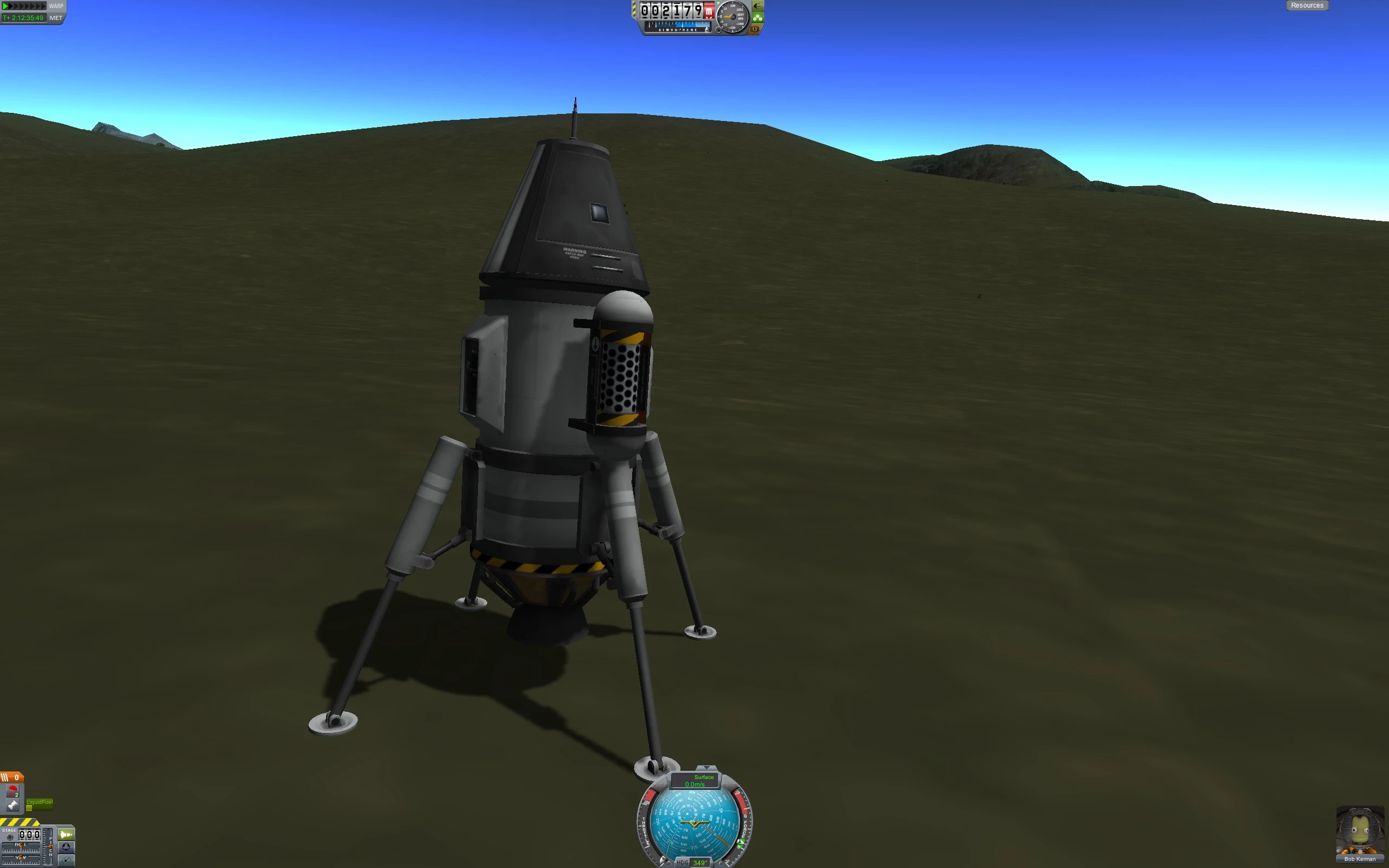
This was my first successful craft, which lifted off, flew a short distance from the pad, then (after several botched attempts and the deaths of several Kerbal pilots) touched down.
This was followed by a hideously inefficient, yet perversely pleasing design, combining three off-axis tanks and rocket motors in a tetrahedral configuration.
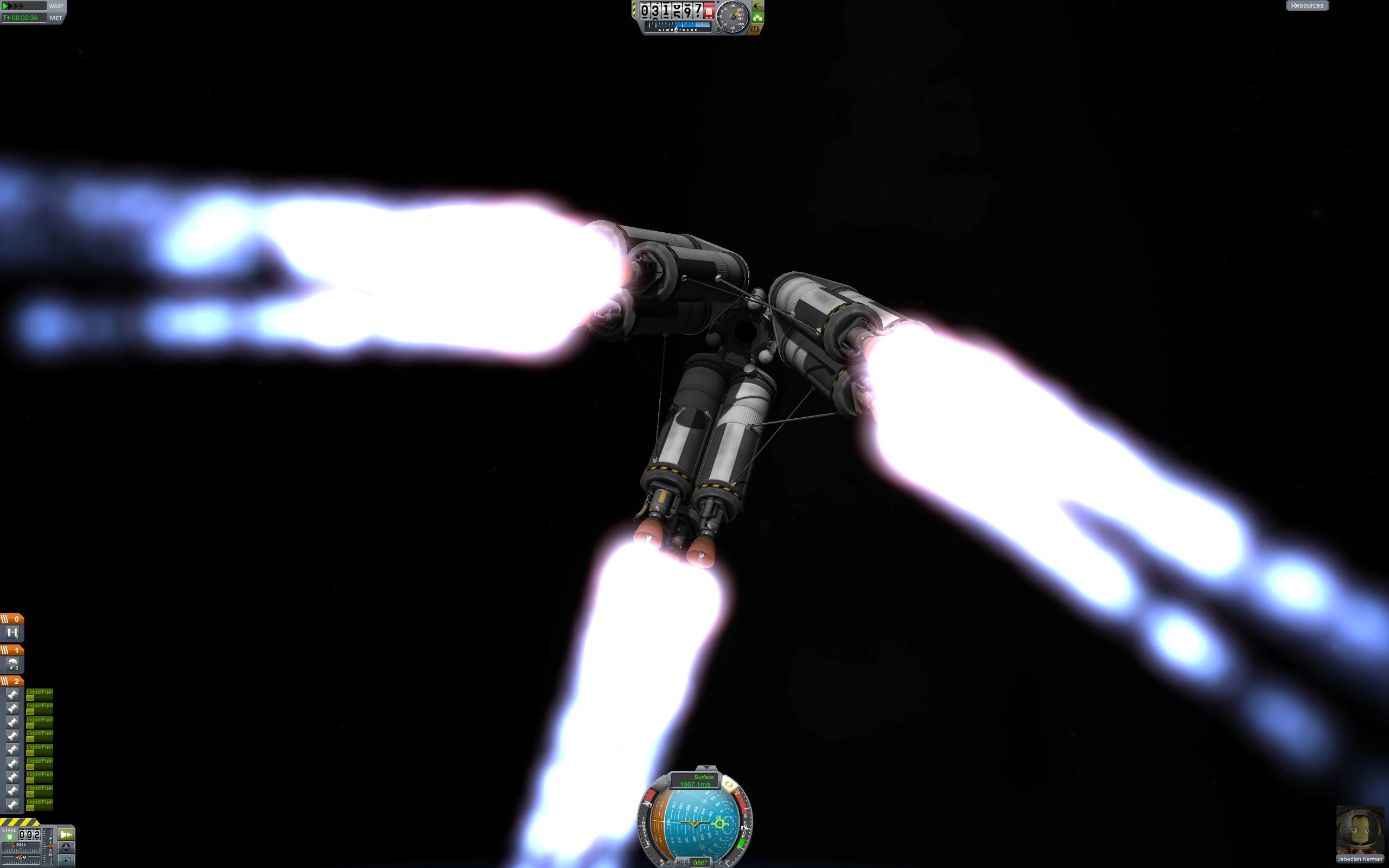
For obvious reasons, this design didn’t make it far, and I decided to pursue more pedestrian goals, such as walking on the moon, or, as Kerbals would have it, “Mun”.
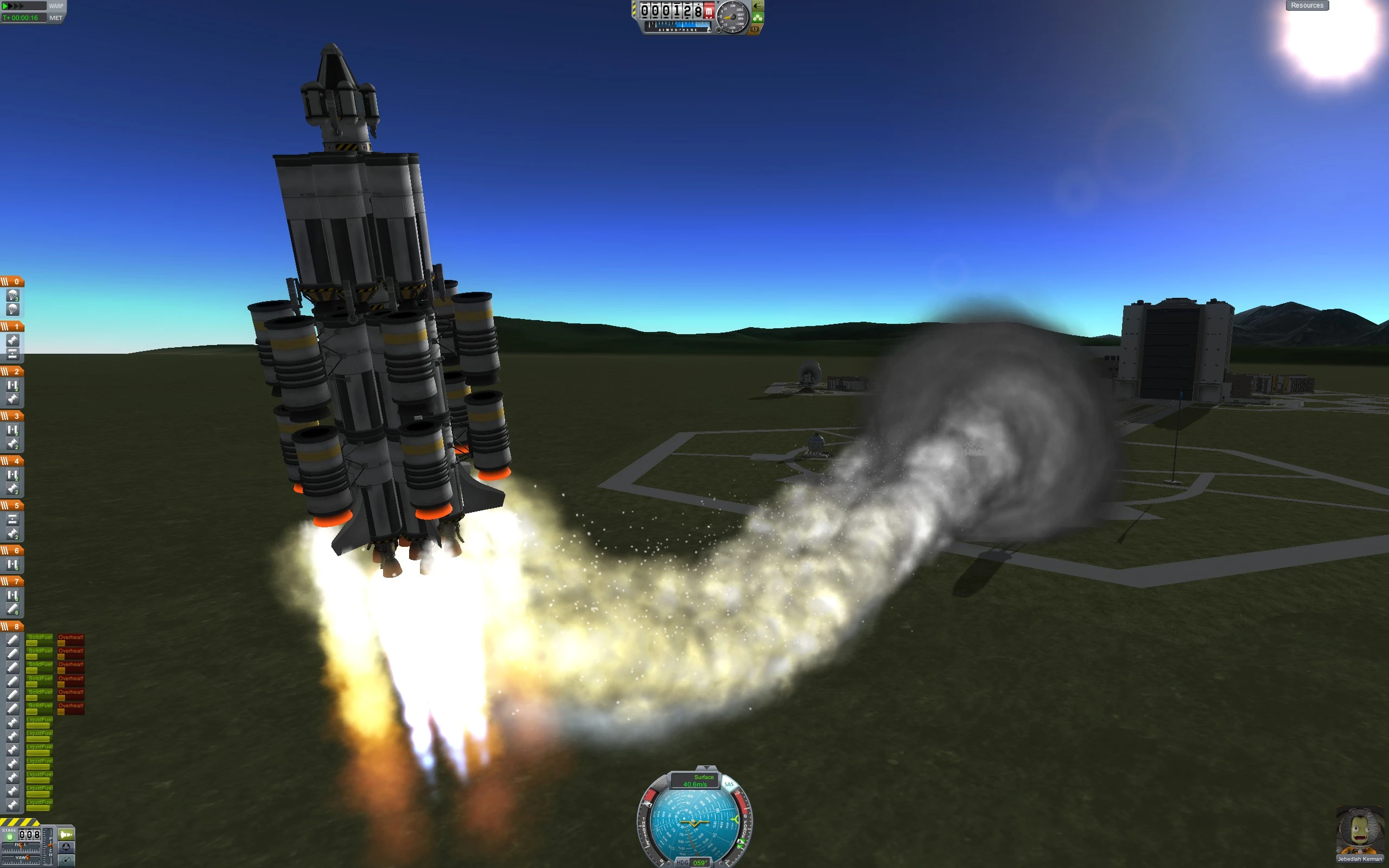
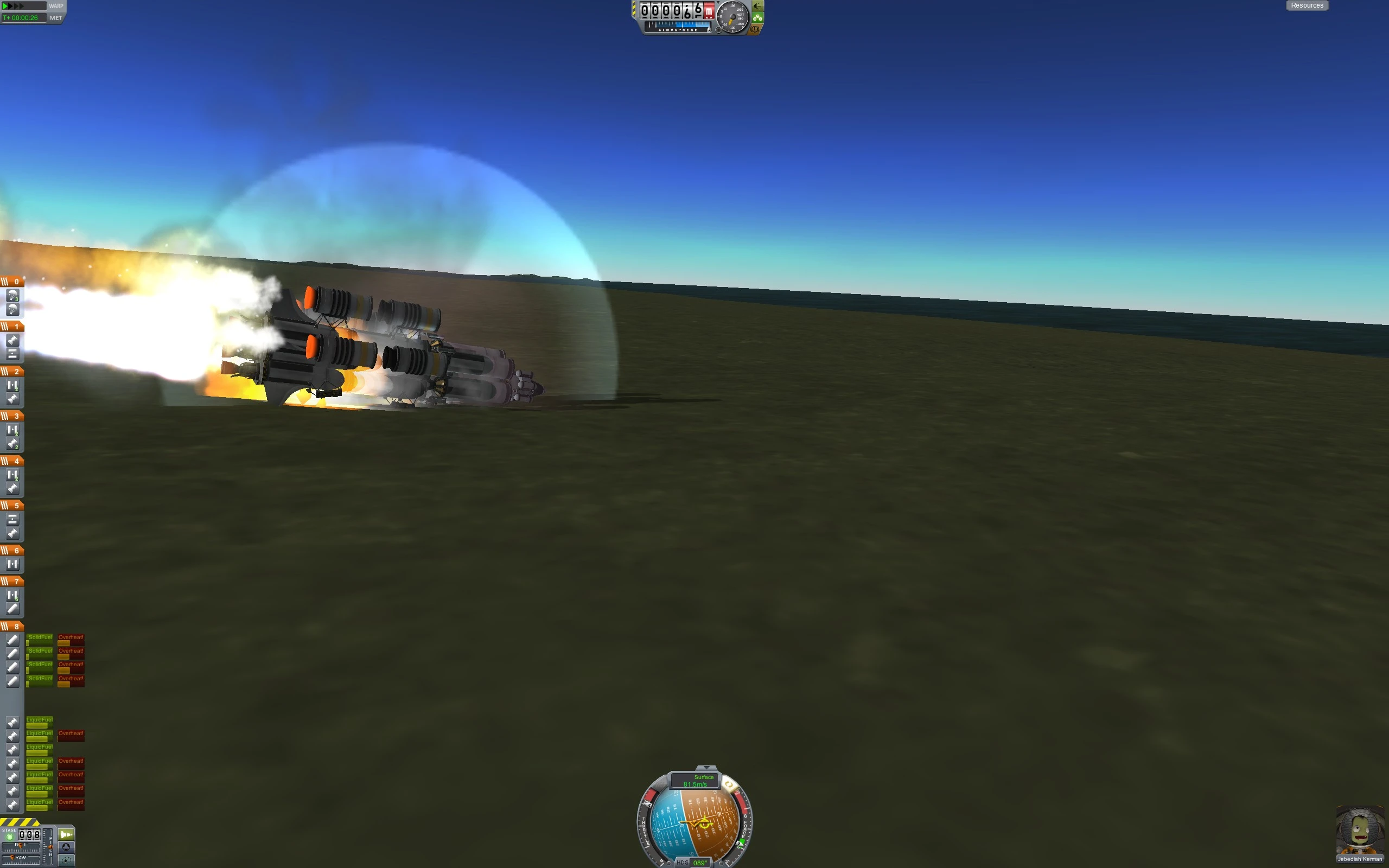
Early solid-booster designs failed spectacularly, but eventually we got a lander to Mun.
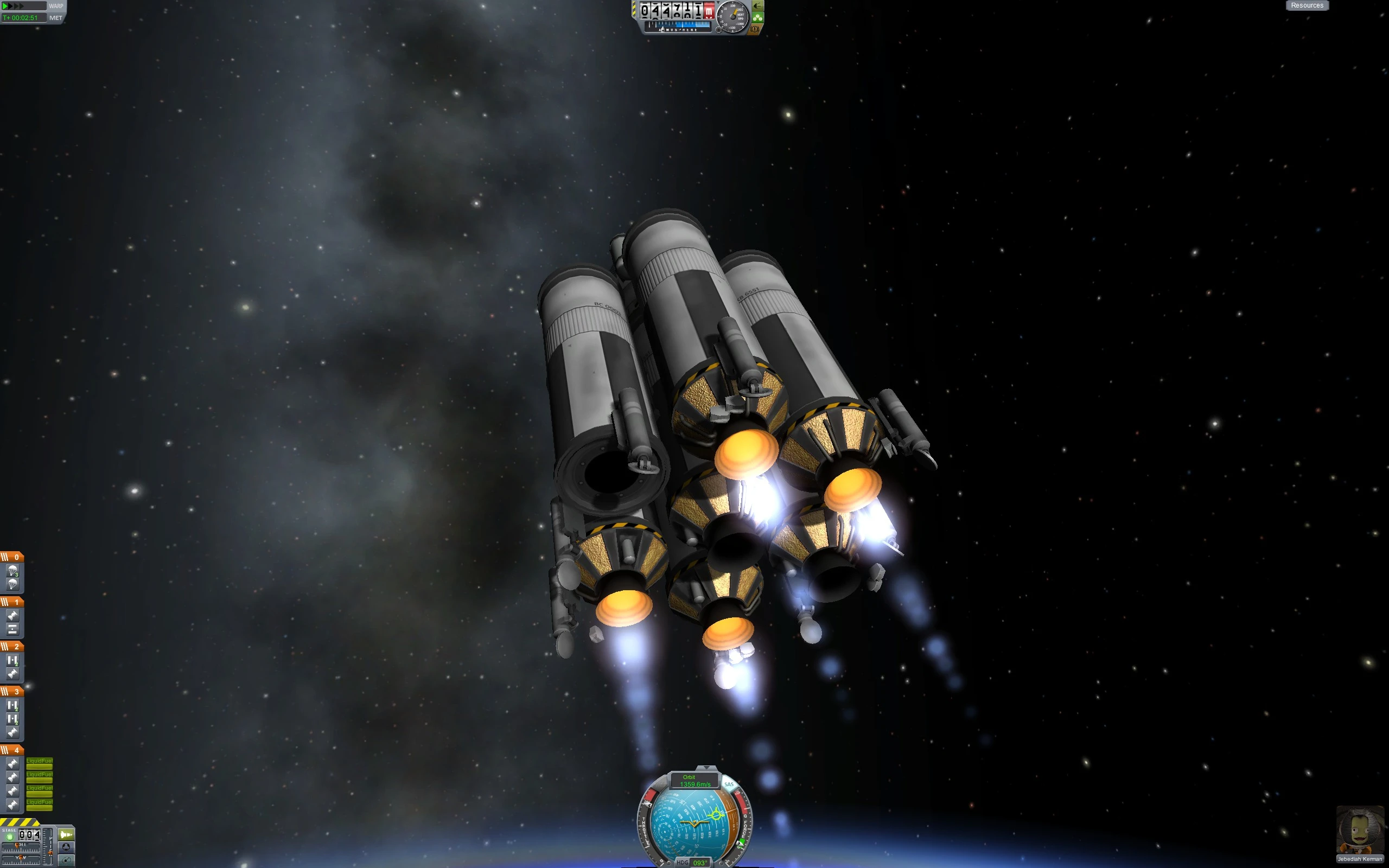
An unplanned interaction between the landing gear and the rocket motor base of the descent stage destroyed one of the seven nozzles for the lander. We were forced to shut down the corresponding engine and funnel fuel to the remaining four balanced motors.
As usual, the deceleration and landing burns used up far more fuel than anticipated, and we were forced to land only the command module. Luckily, the command module had landing gear–intended for Earth (Kerbin)–which worked just fine on the Mun.
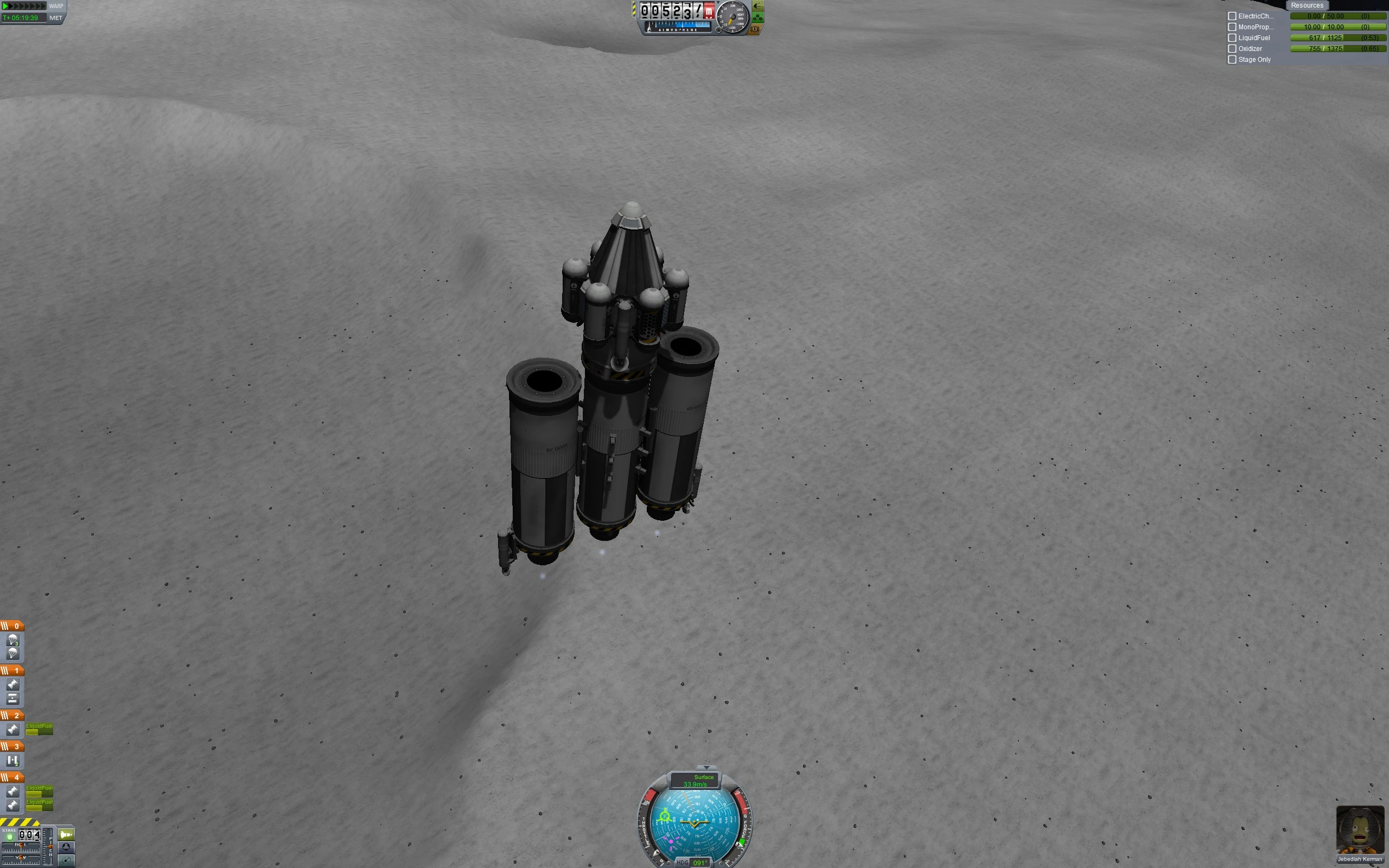
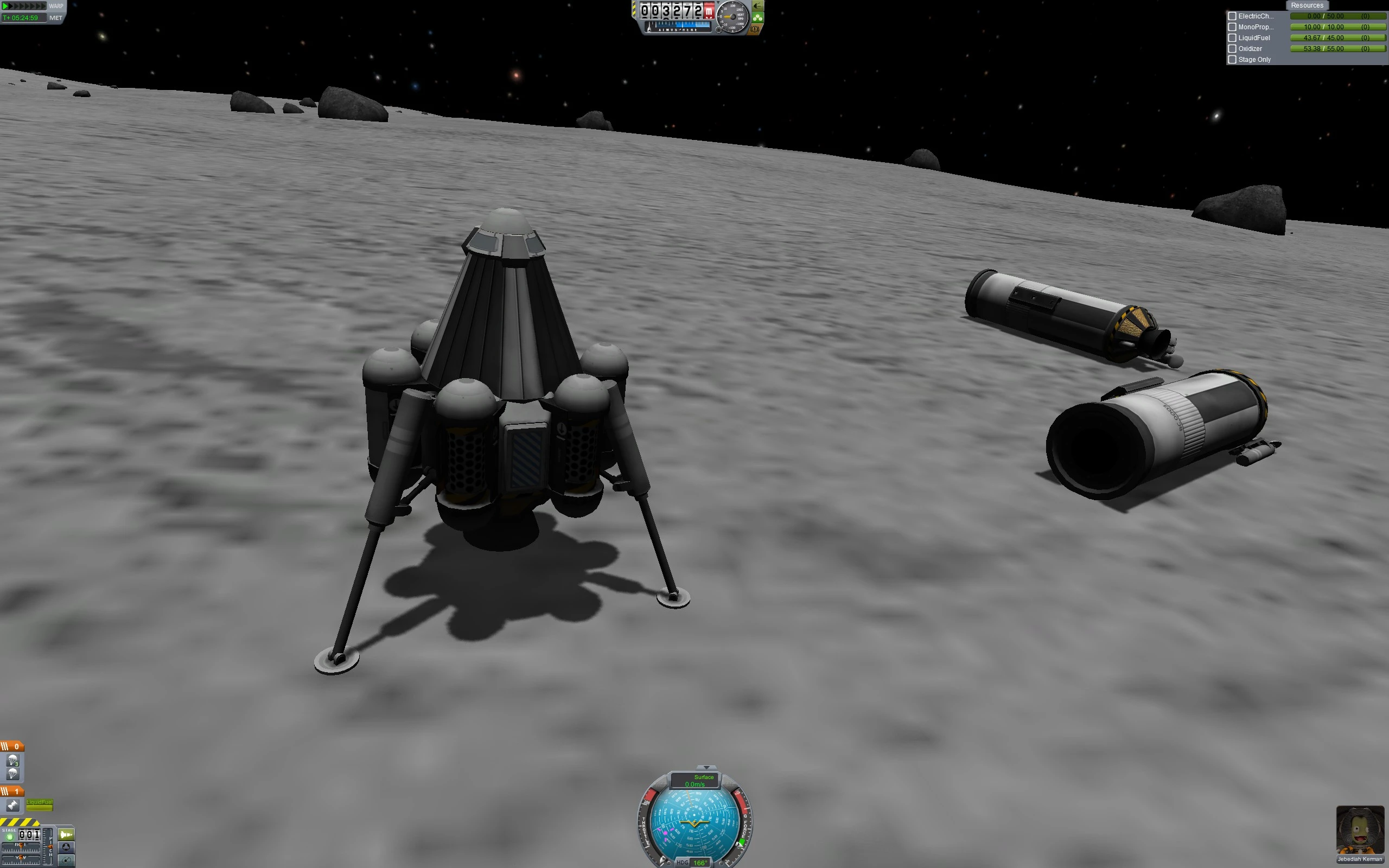
Unfortunately, this left us with the small problem of getting Jeb Kerman back home to Kerbin. The command module was able to reach 21 kilometers altitude, but didn’t have enough fuel to complete an orbital injection burn. Thinking quickly, Jeb jumped out of the control module and used his EVA jets to complete the insertion burn. The command module fell back to Mun and exploded, leaving Jeb stranded in Mun orbit.
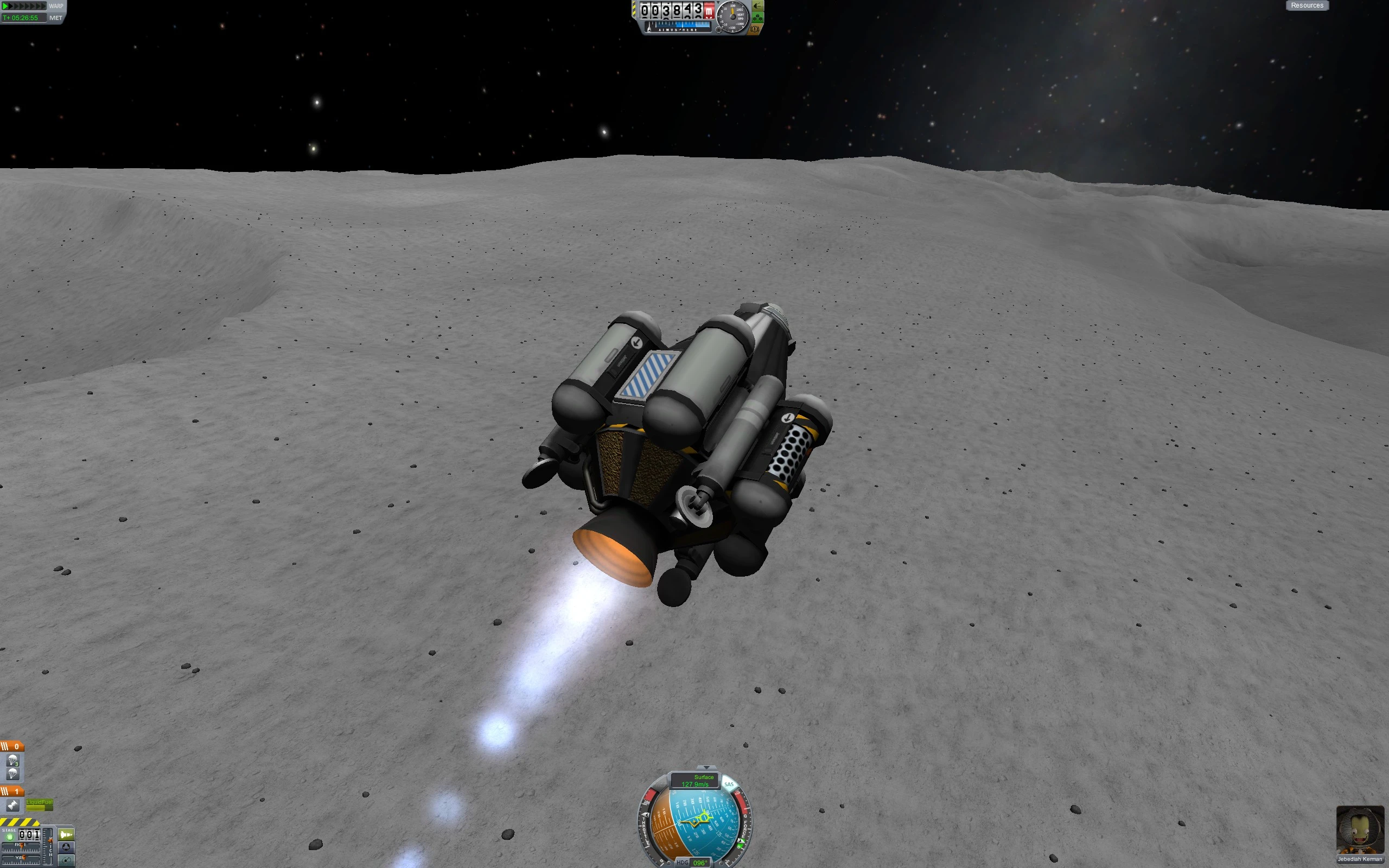
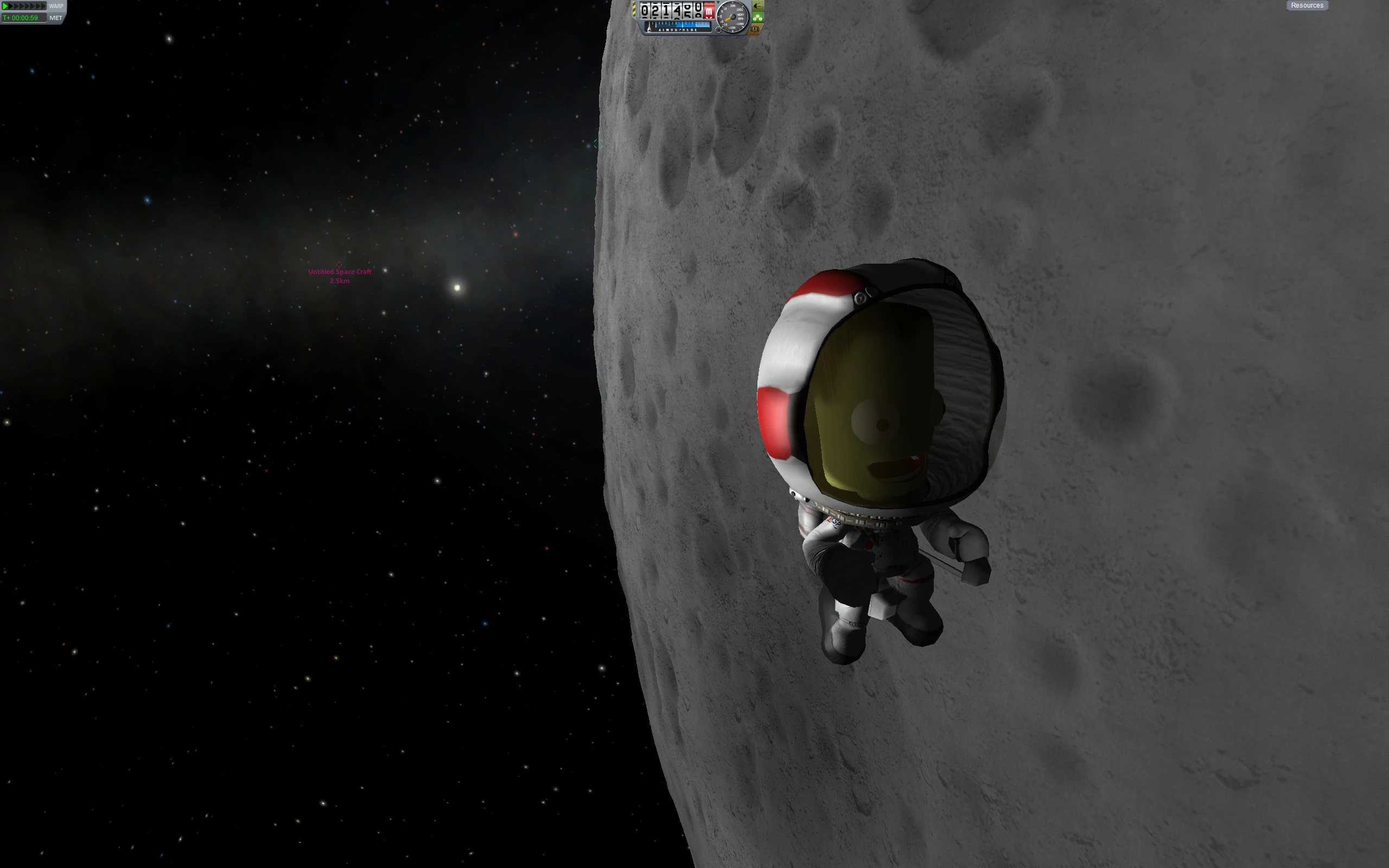
With only limited parts, a rescue mission required creative construction. This design forced the rescued Kerbal to hang suspended, upside down, in his command chair, while thinking about what he (or rather, the incompetent nincompoops over at Fab & Mission Control) had done.
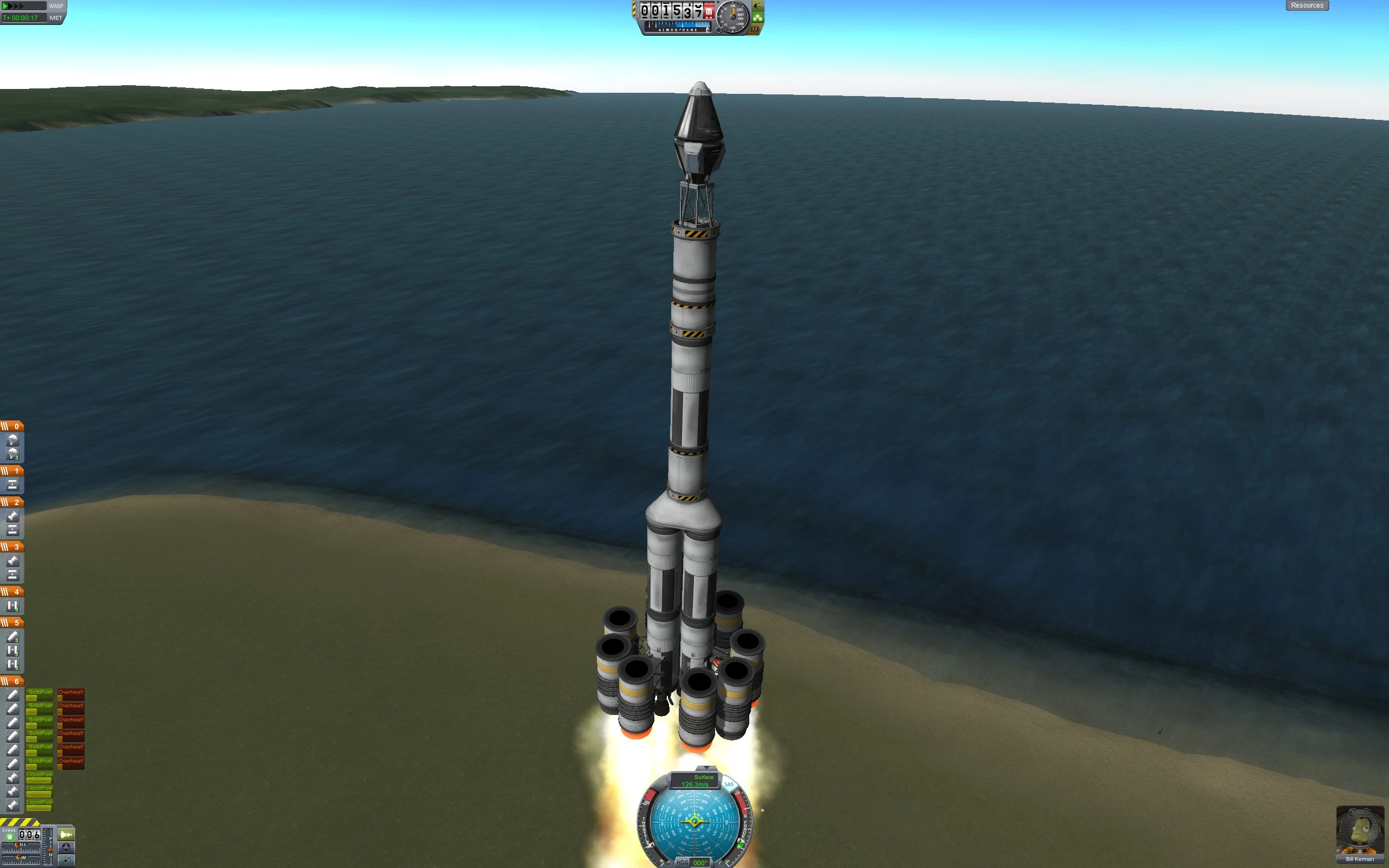
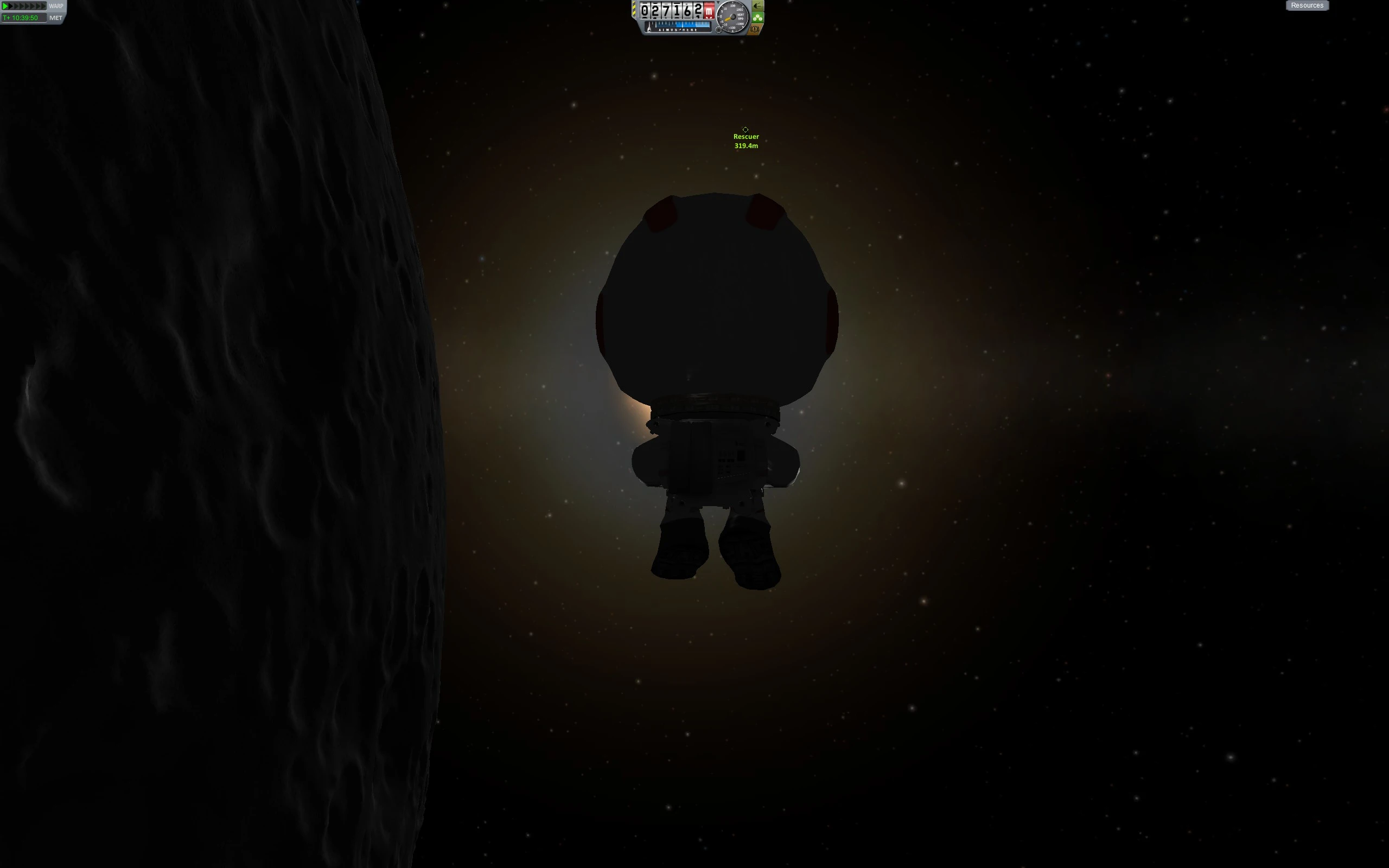
With Jeb’s EVA tank exhausted, we were forced to (gently) smash the entire rescue ship into Jeb, hoping that he could cling to the handholds on the recovery capsule.
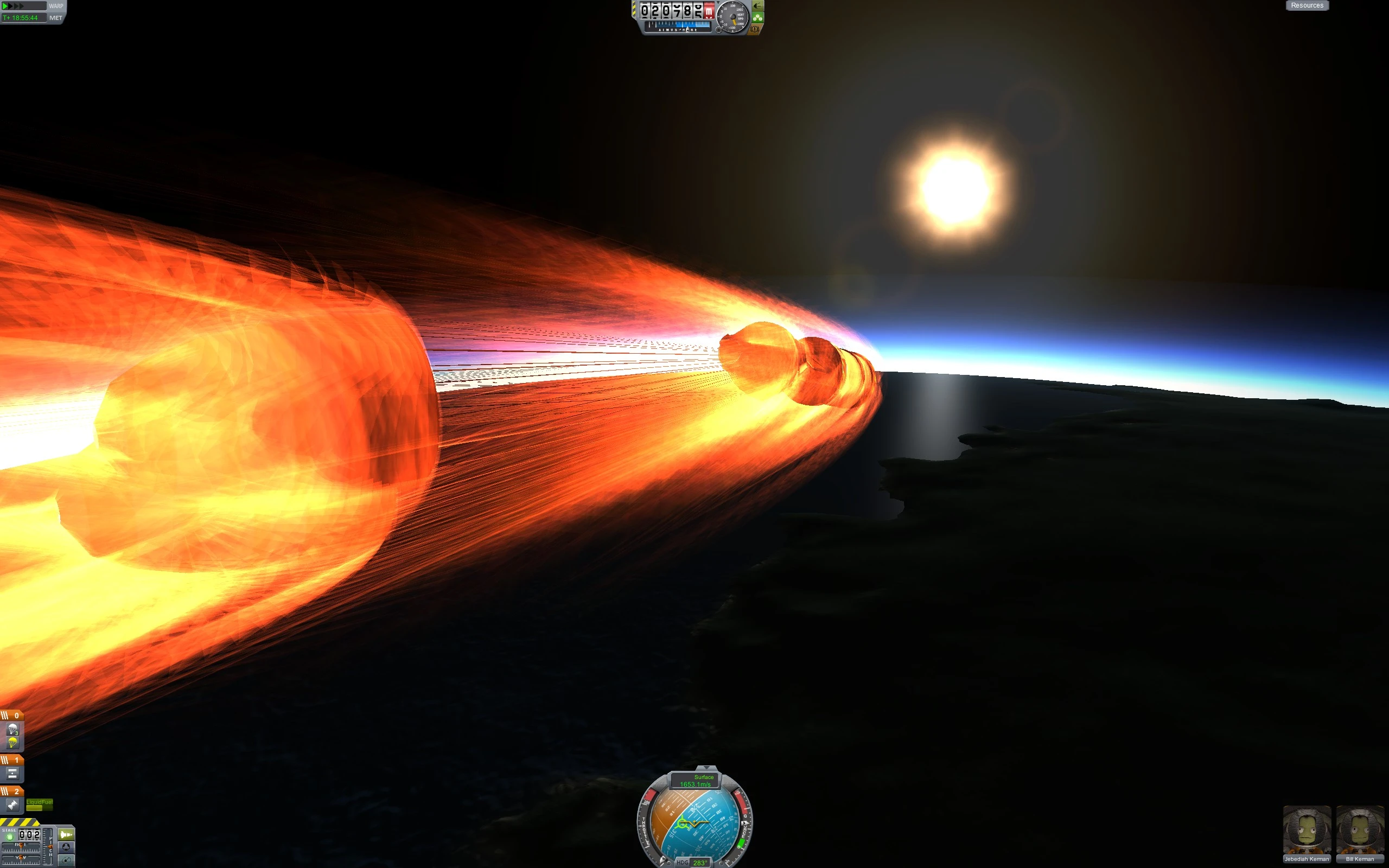
Re-entry and landing went smoothly, and Jeb returned, rather shaken, to Mission Control.
Following the Great Fuel Debacle, our engineers discovered spiral staging, and proceeded to design, and explode, significantly higher delta-V launch vehicles.
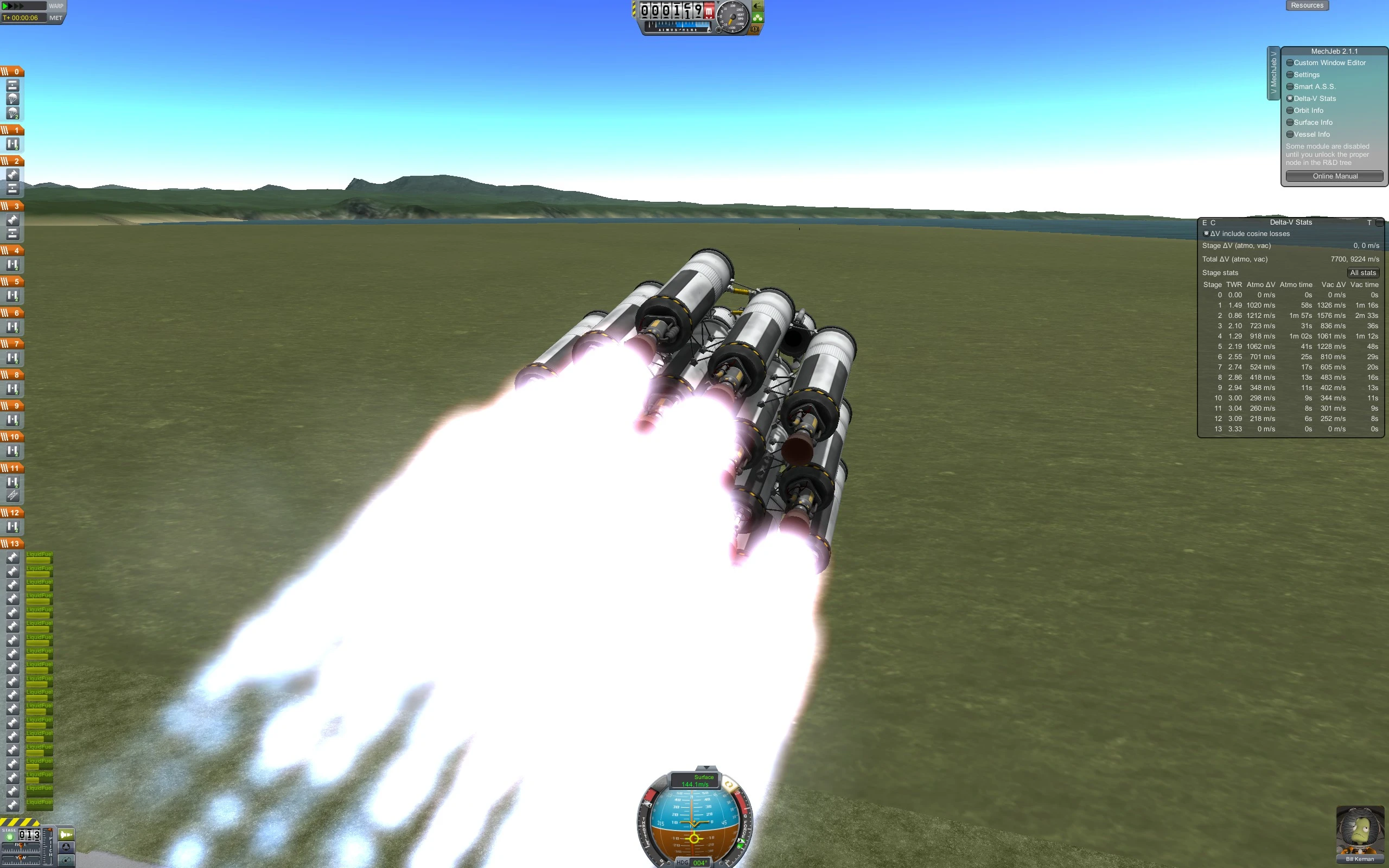
Subsequent landings on Mun and Minmus went (comparatively) smoothly.
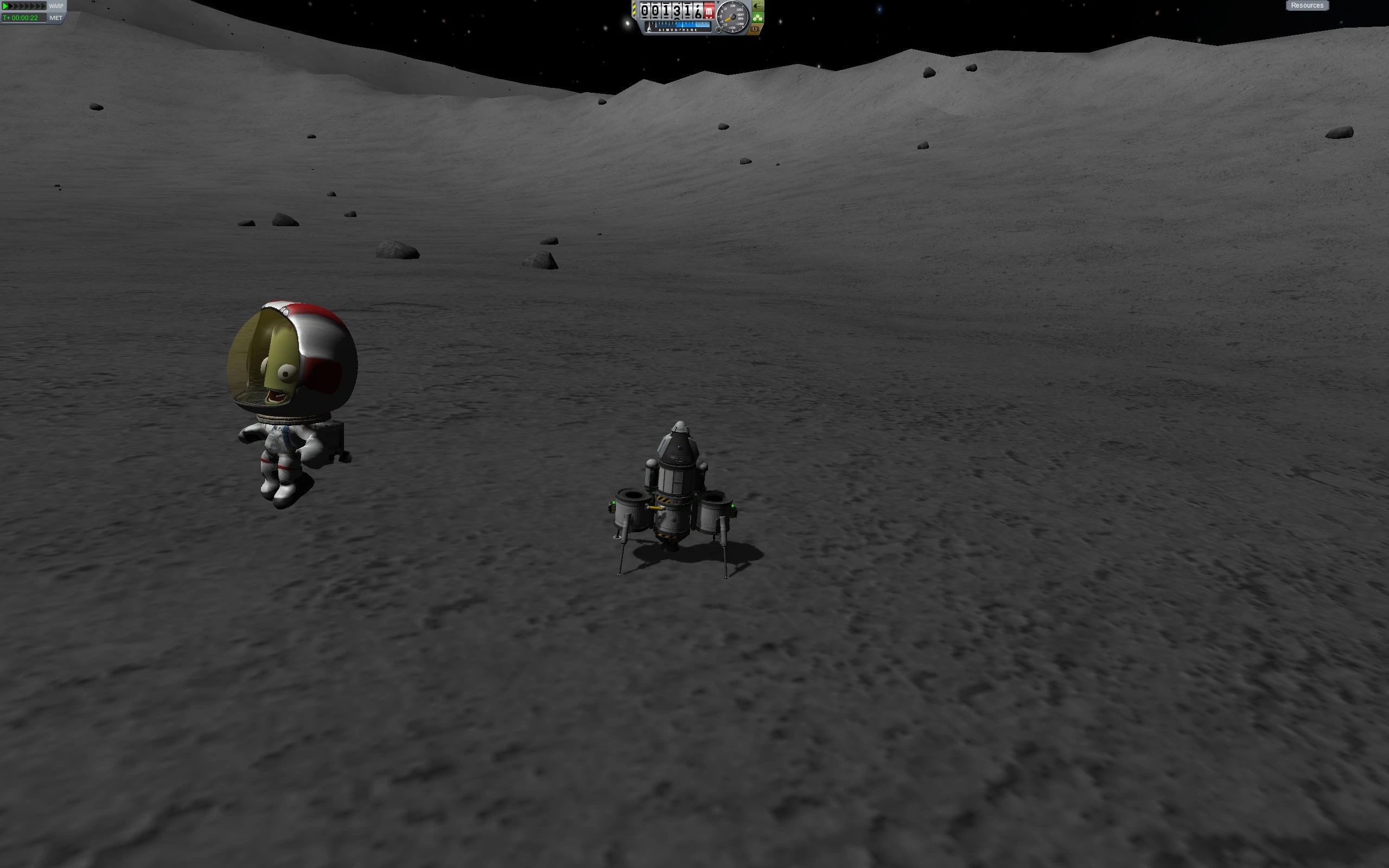
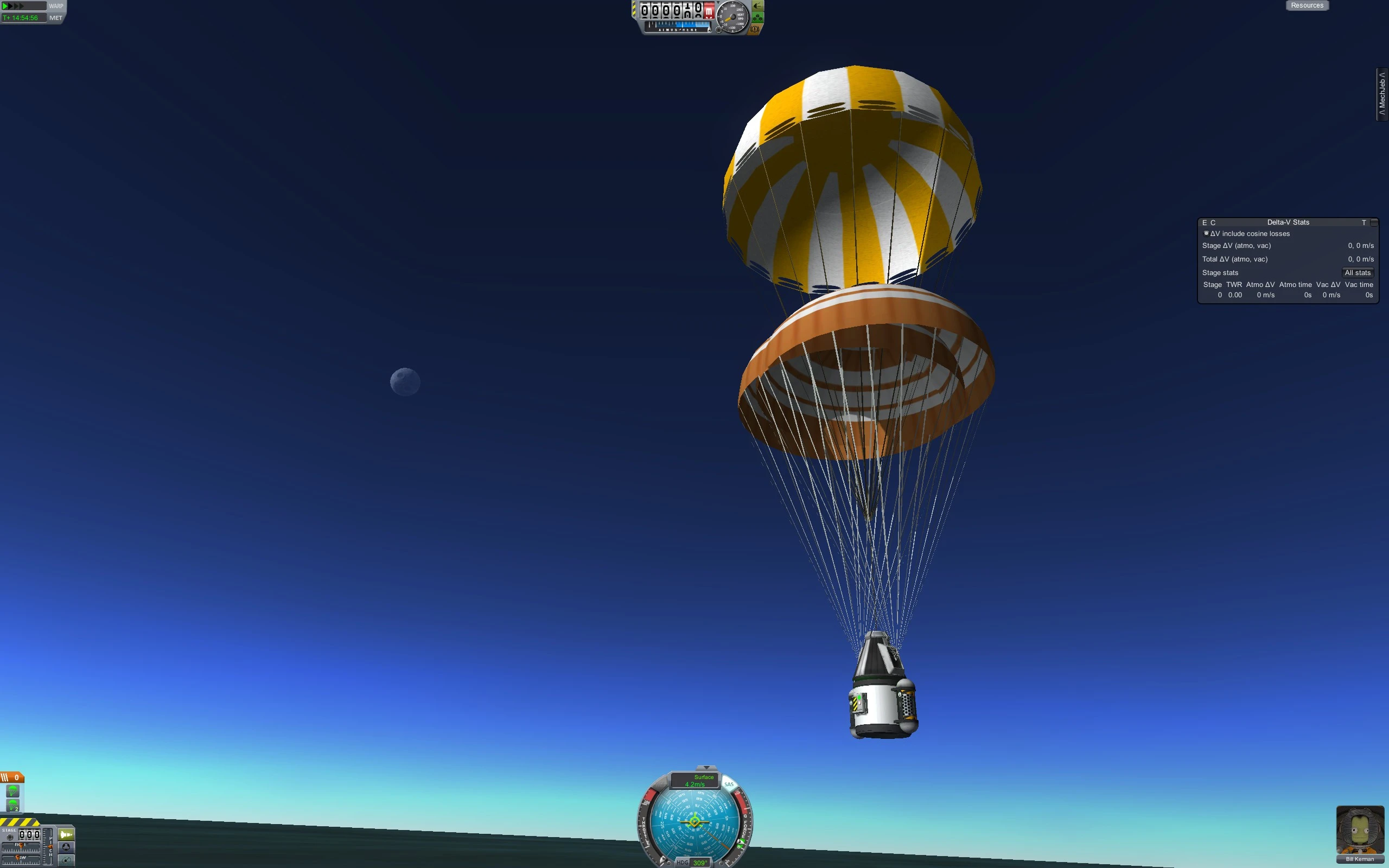
As soon as we’d performed enough Scientific Research to build more sophisticated parts, I decided to launch a space station. This is the first space station module, being delivered to geosynchronous orbit approximately 200 meters south of the launch pad.
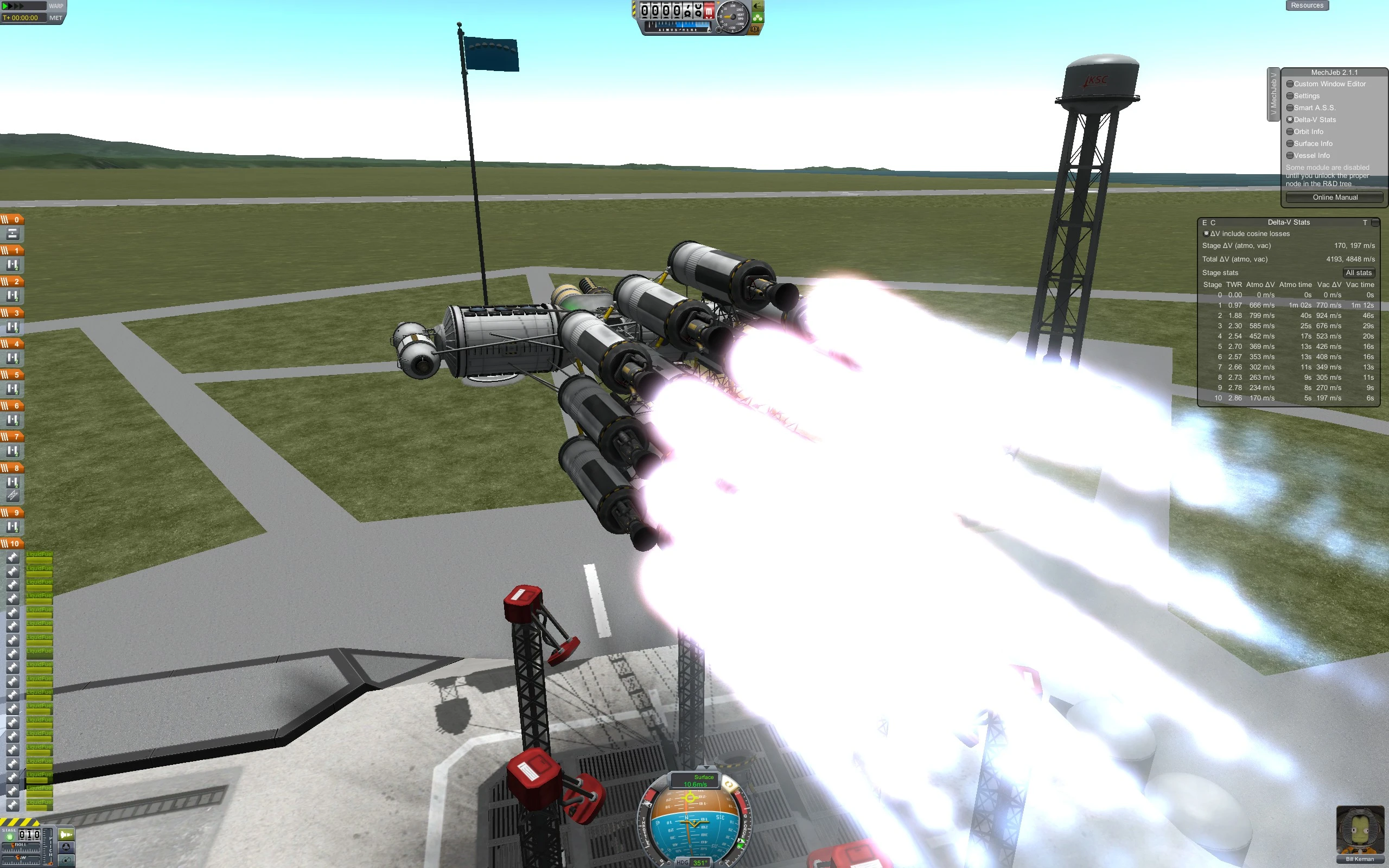
Launching asymmetric objects is hard. You have to balance atmospheric drag (in atmosphere) and center-of-mass (in both atmo and space). Eventually we got it right. Here’s the first hab node and research lab, in a more suitable orbit.
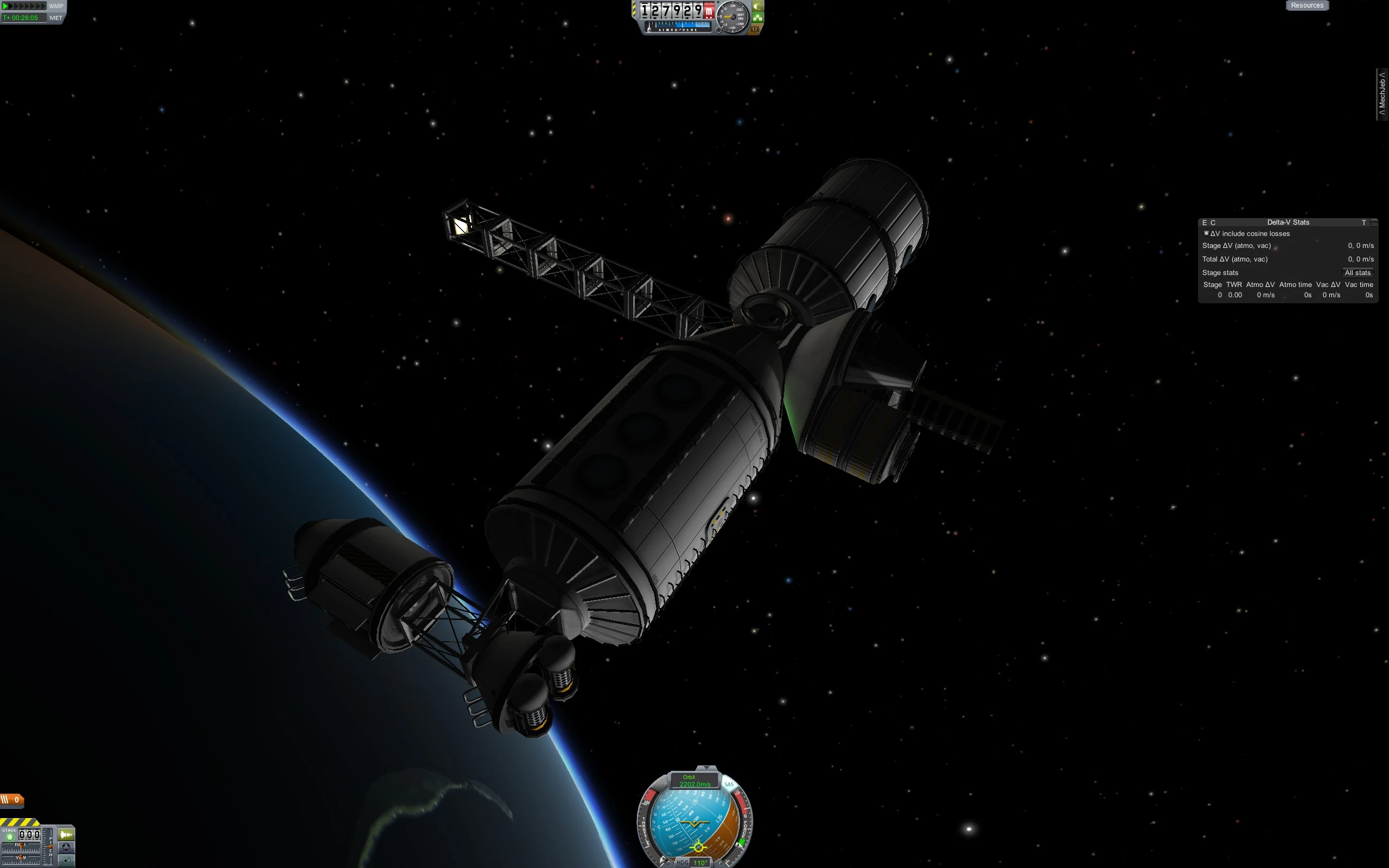
Space stations need spaceplanes to deliver and recover crew. Of course, I’m not skilled enough to build actual spaceplanes. This one uses regular rockets to get into orbit. Once there, it can shuttle crew between orbiting ships and stations, and return them to earth when needed. With several Kerbals left floating, empty-tanked, in orbit, this seemed like an important capability for our burgeoning space program.
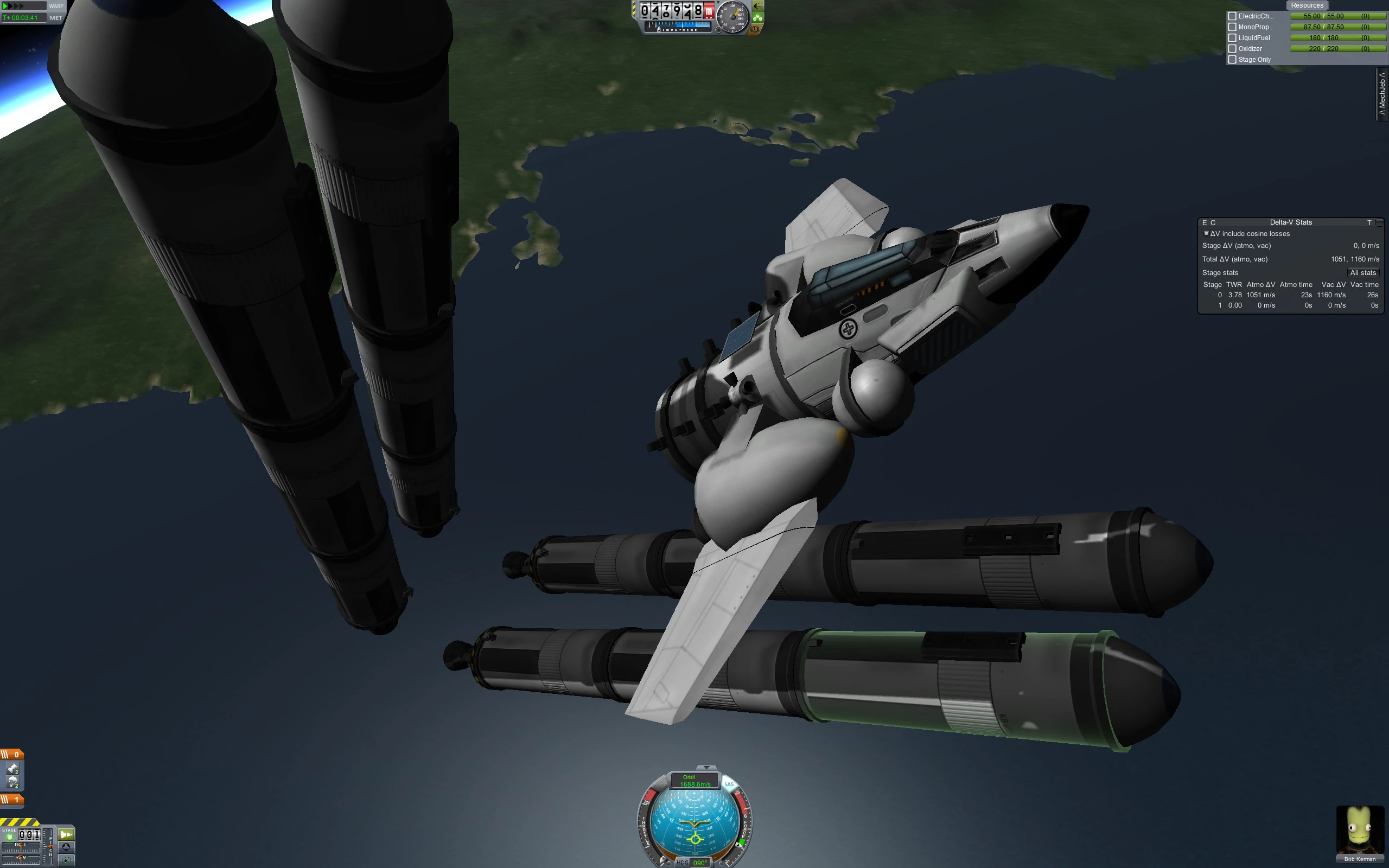
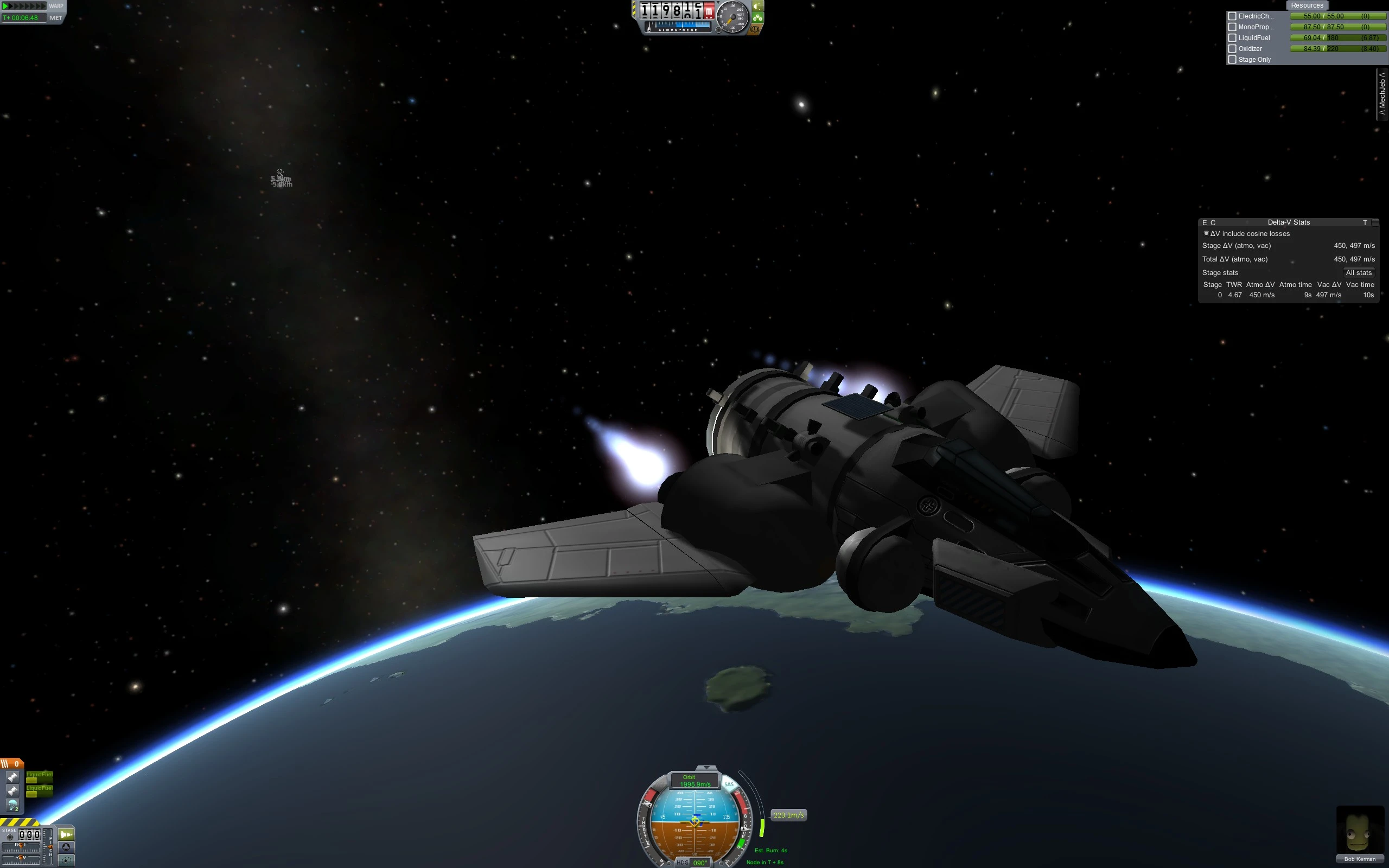
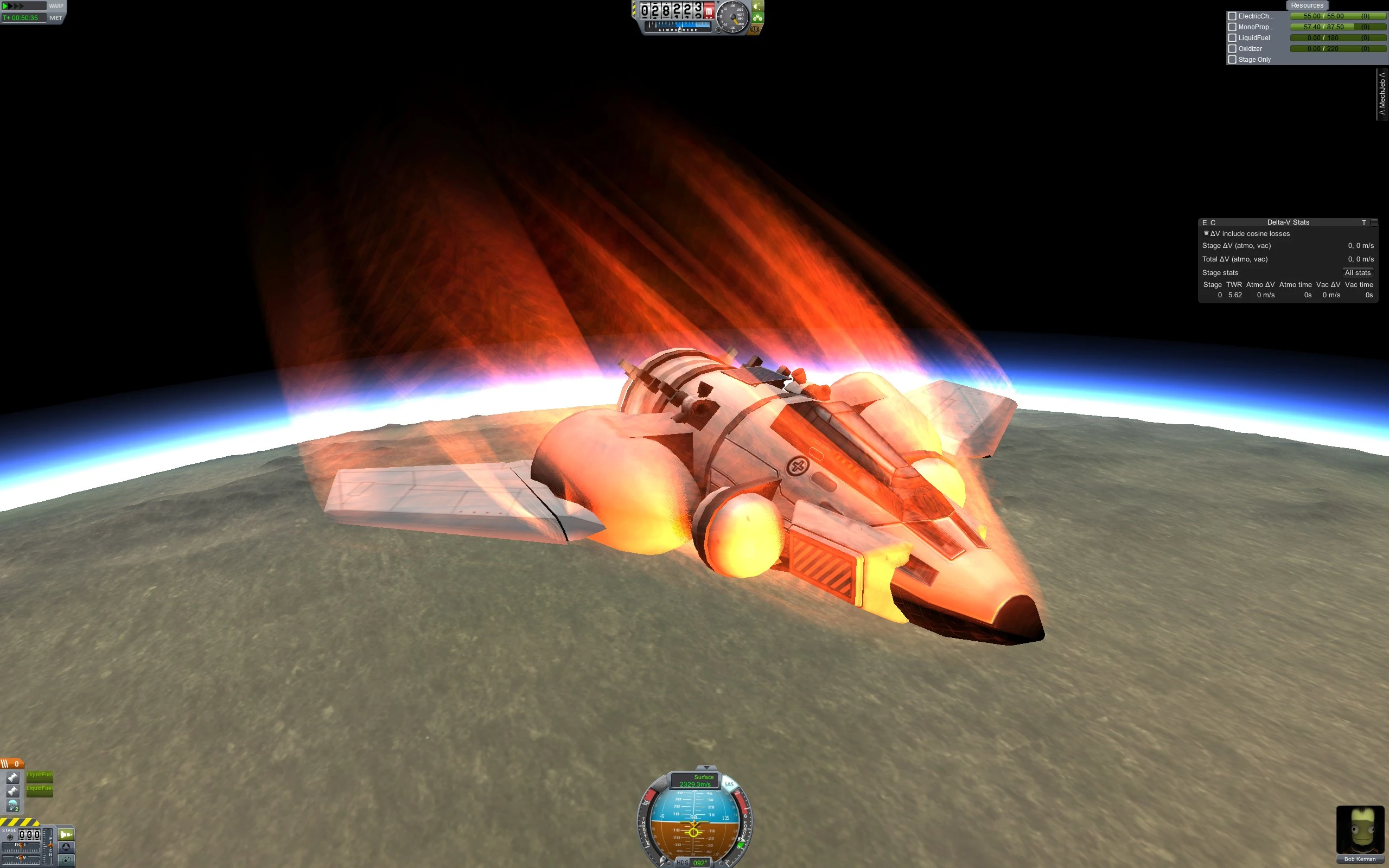
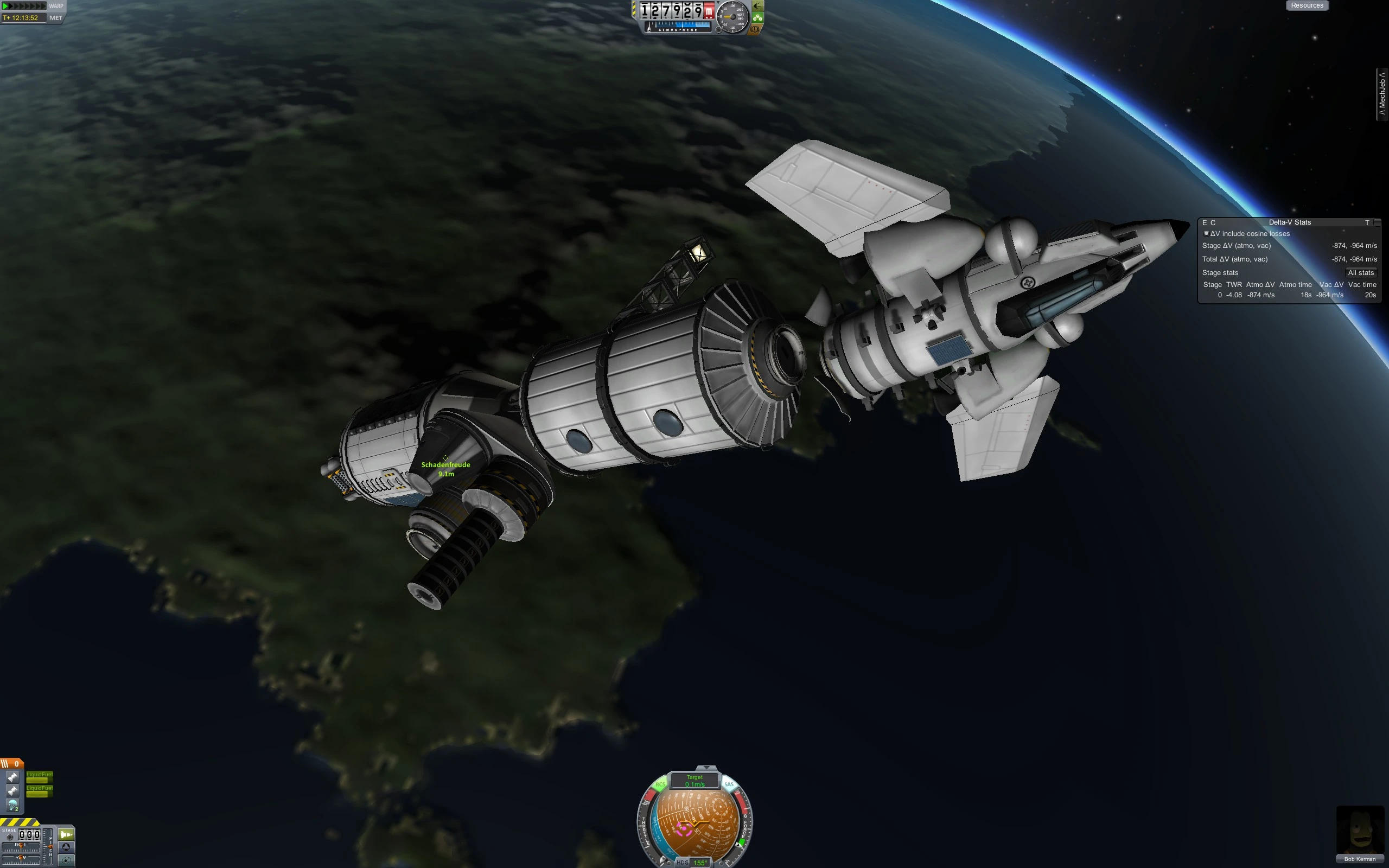
With our capabilities constrained by a lack of science, I set out to seed the solar system with instrumented probes. Here’s a seven-probe seed pod, which scatters its probes across a planet’s surface.
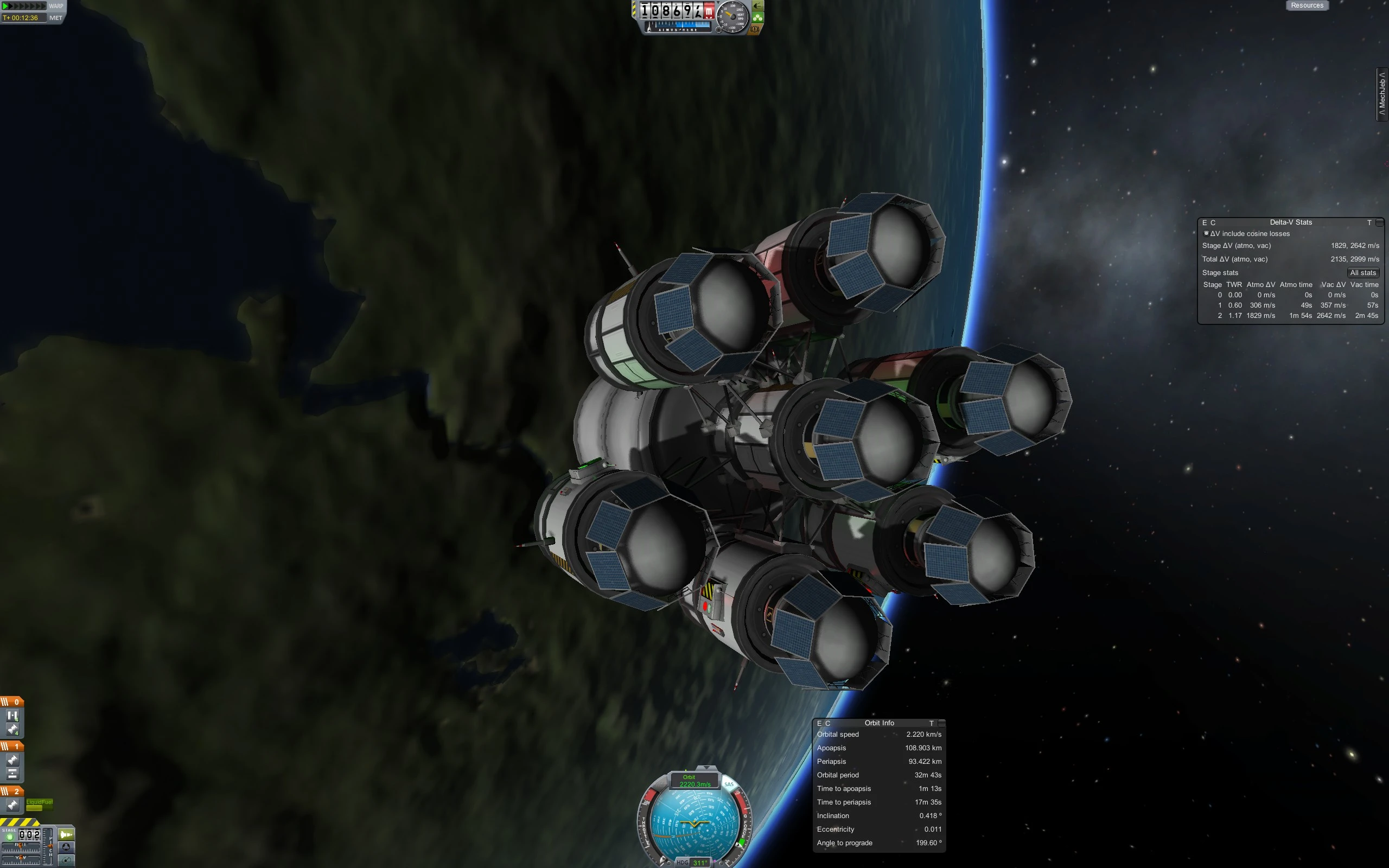
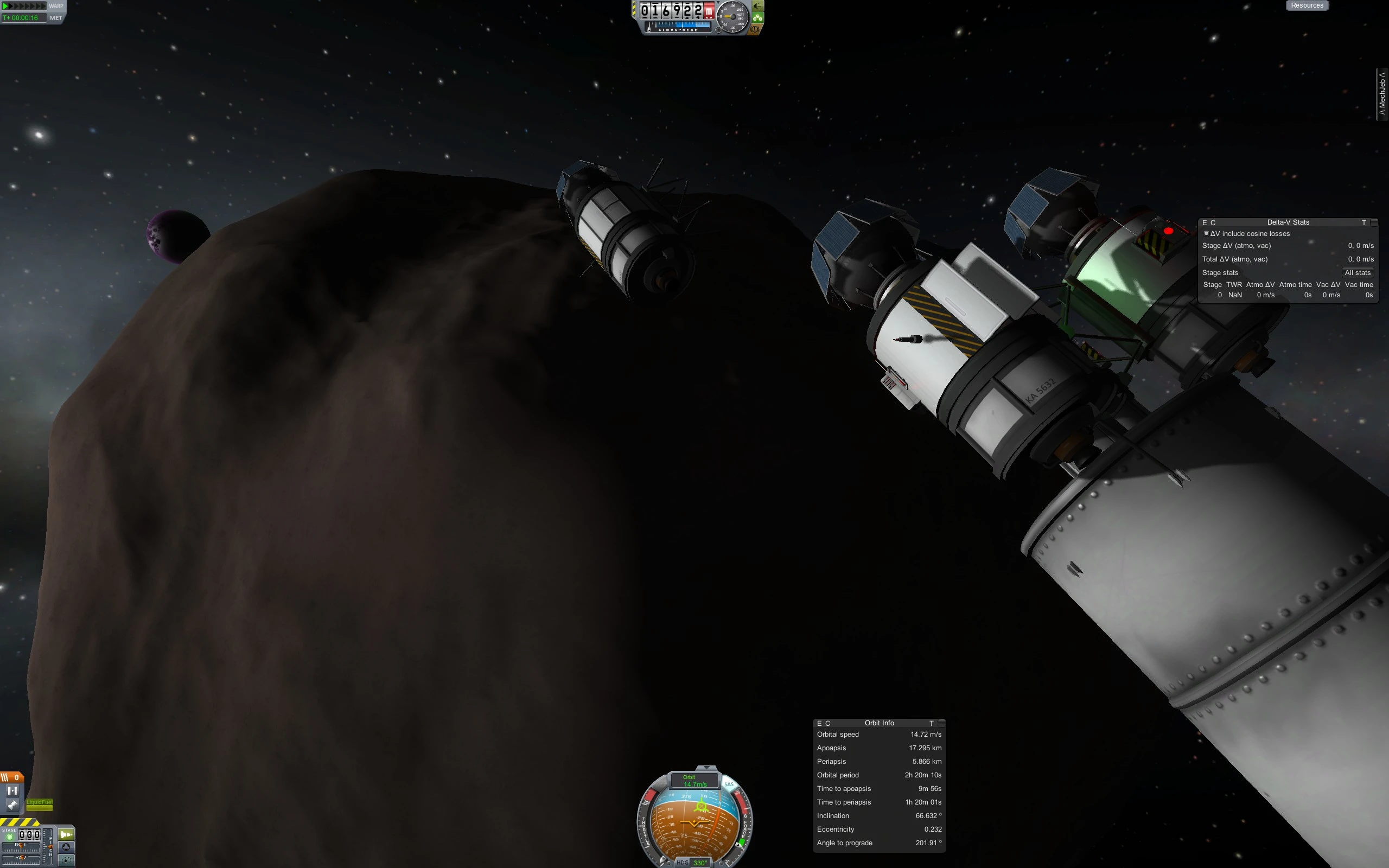
With new research came new parts, and even larger launch vehicles. This one provides about 10,000 m/s of total delta-v; more than enough to put a crewed lander onto Mars’ (Duna’s) moons. I don’t think I had large decouplers at this point, so it’s not even spiral staged. The entire first stage goes straight to orbit with ~6000 m/s to spare.
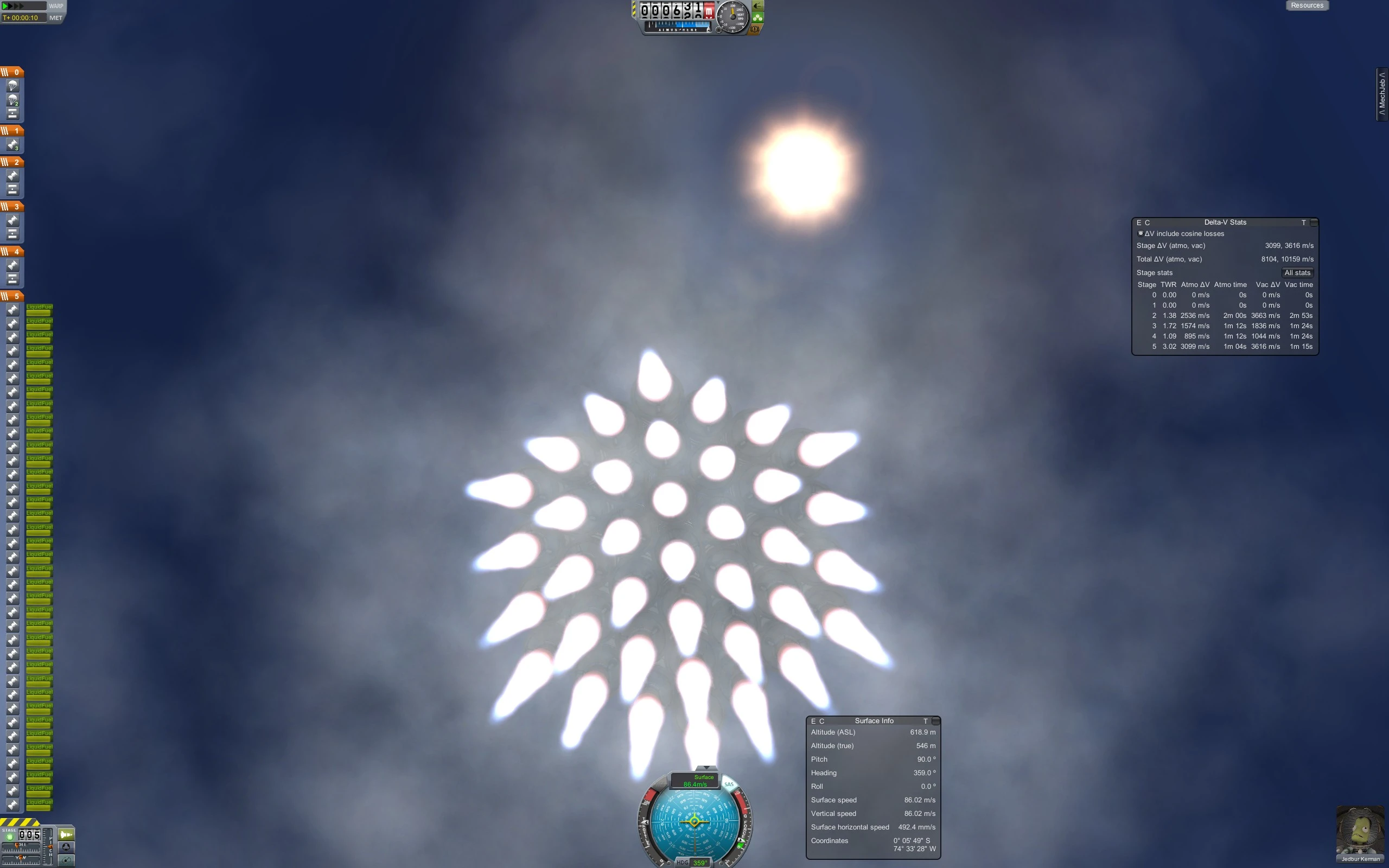
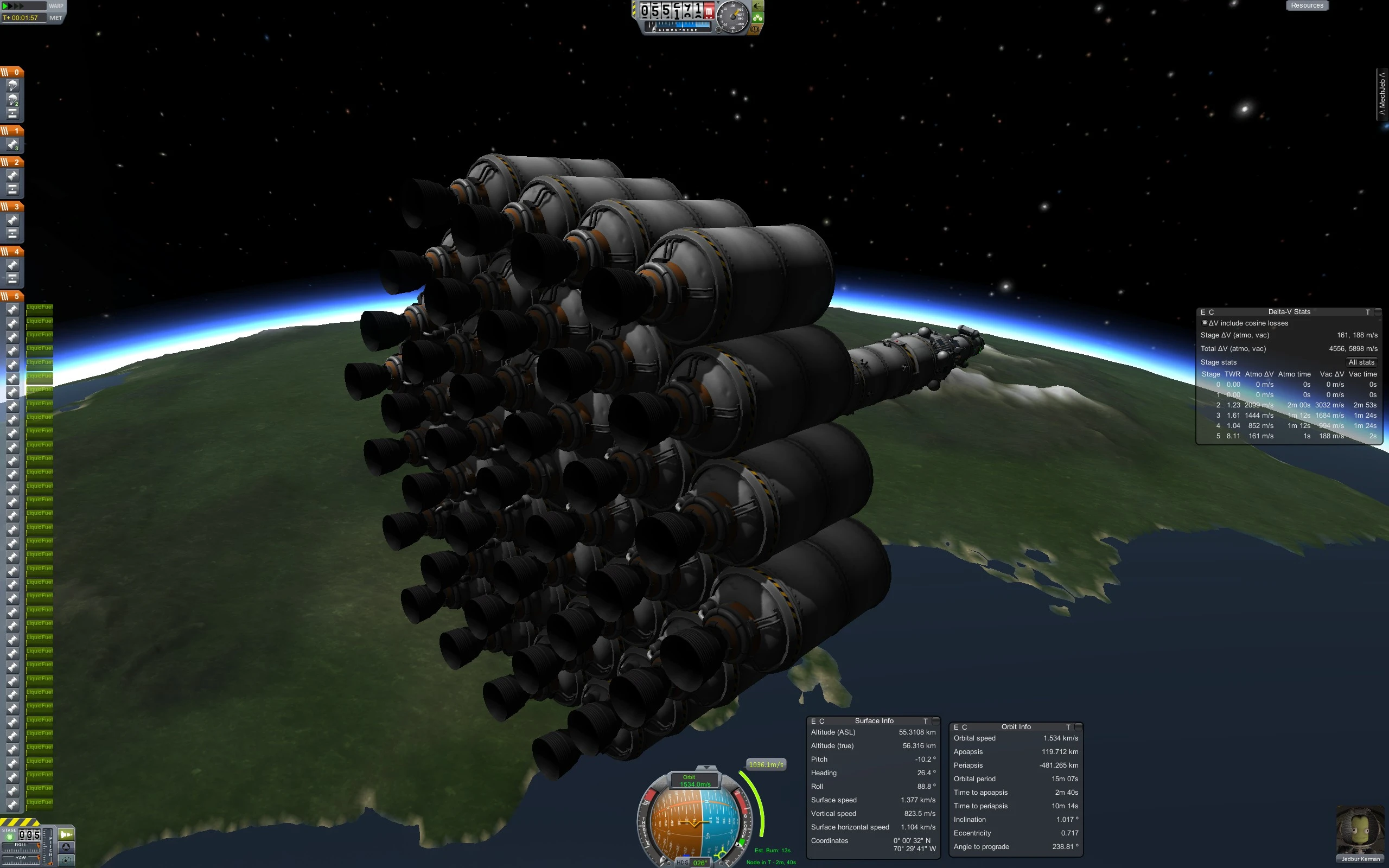
The interplanetary stage carries ~3000 m/s to get us to Duna and perform the appropriate insertion burns.
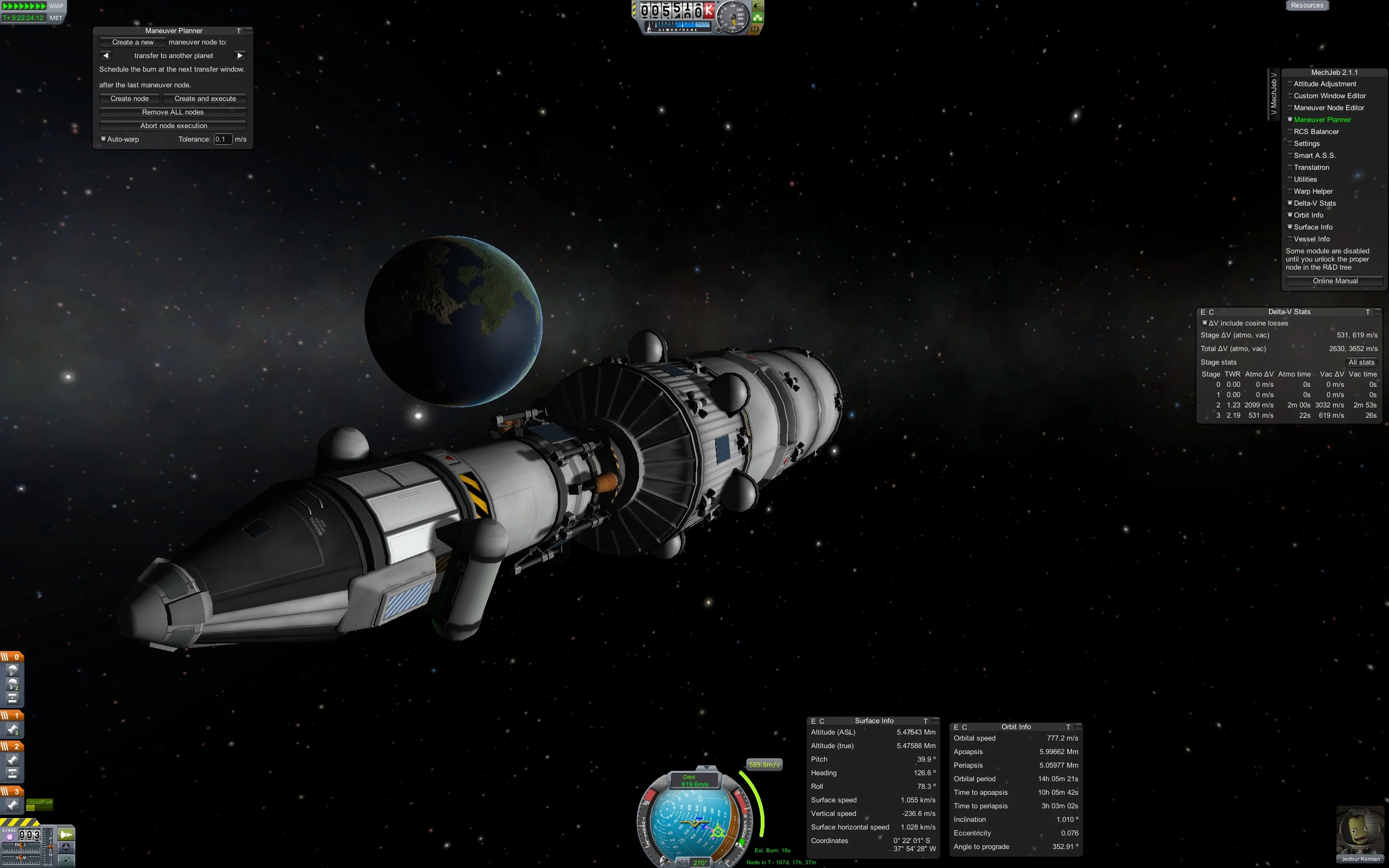
To leave space for the docking port, we’re limited to these tiny side-mounted motors. So long as we keep to low-gravity environments (e.g. very small moons) they’re very efficient, leaving us ~1800 m/s for deorbit, landing, ascent, and docking with the interplanetary transfer vehicle.
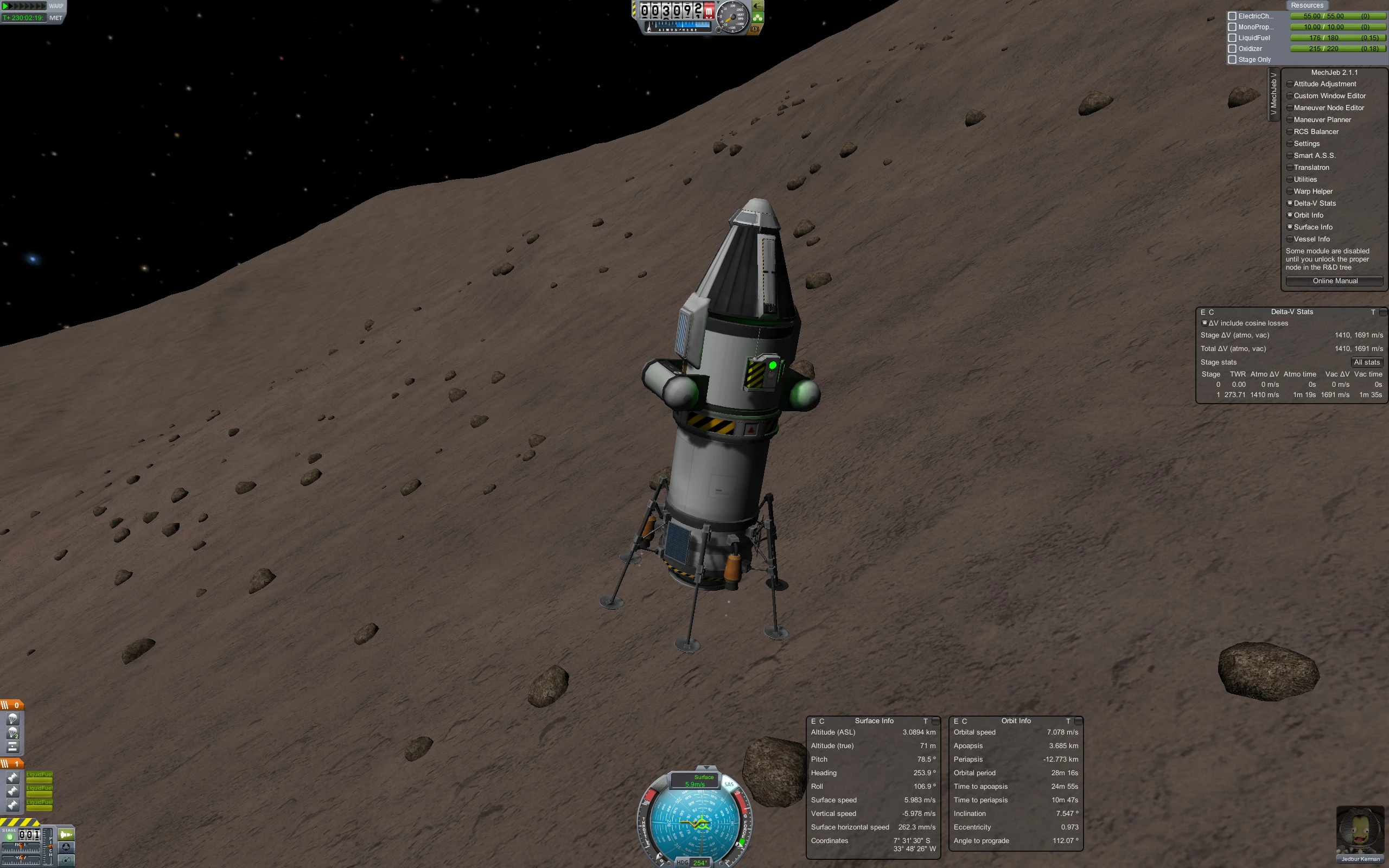
To save landing mass, only the transfer vehicle carries Reaction Control motors and monopropellant. We pilot it via radio and dock it to the lander.
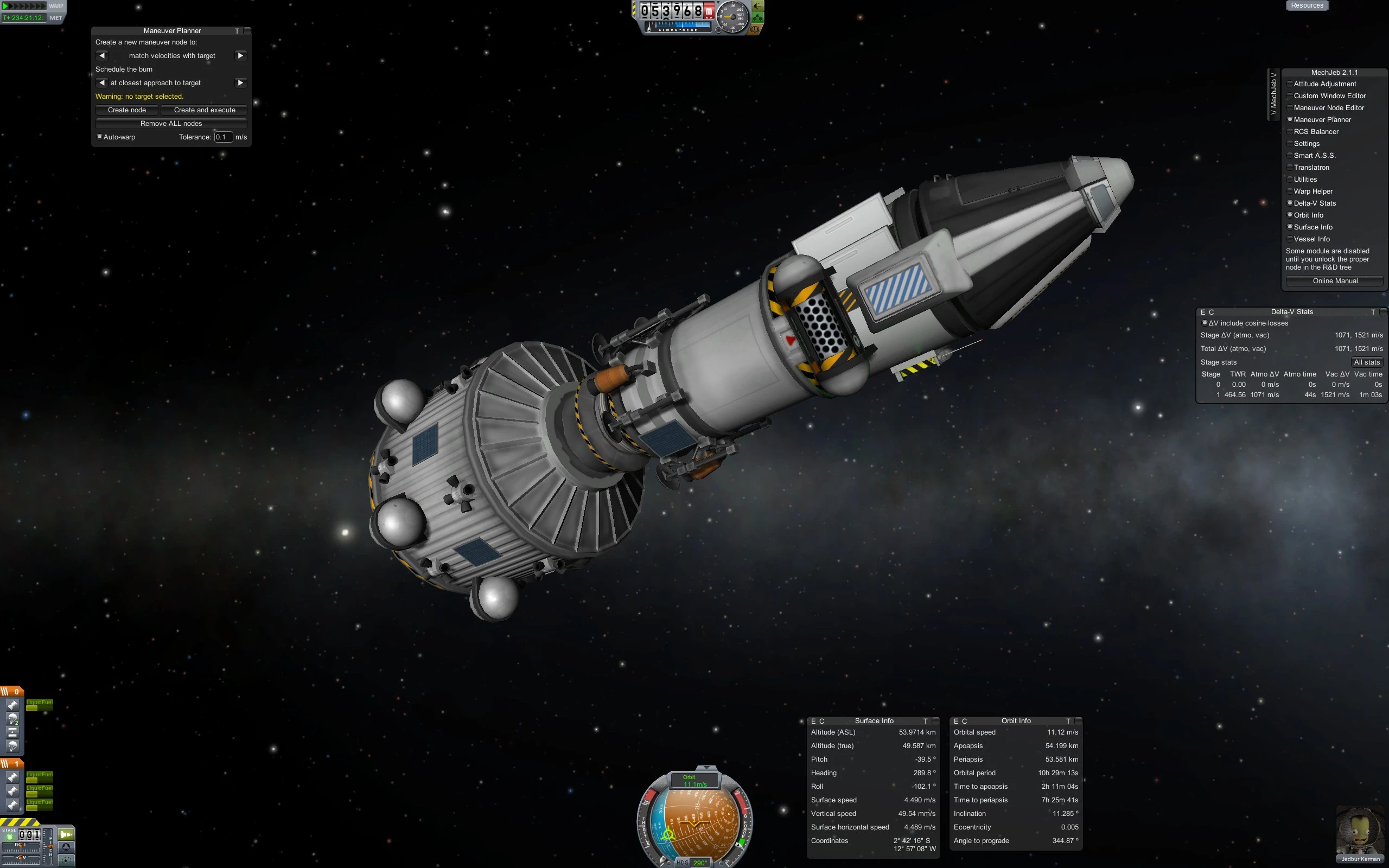
… which allows the entire crewed science lander, and its valuable experiments, to return to Kerbin intact.
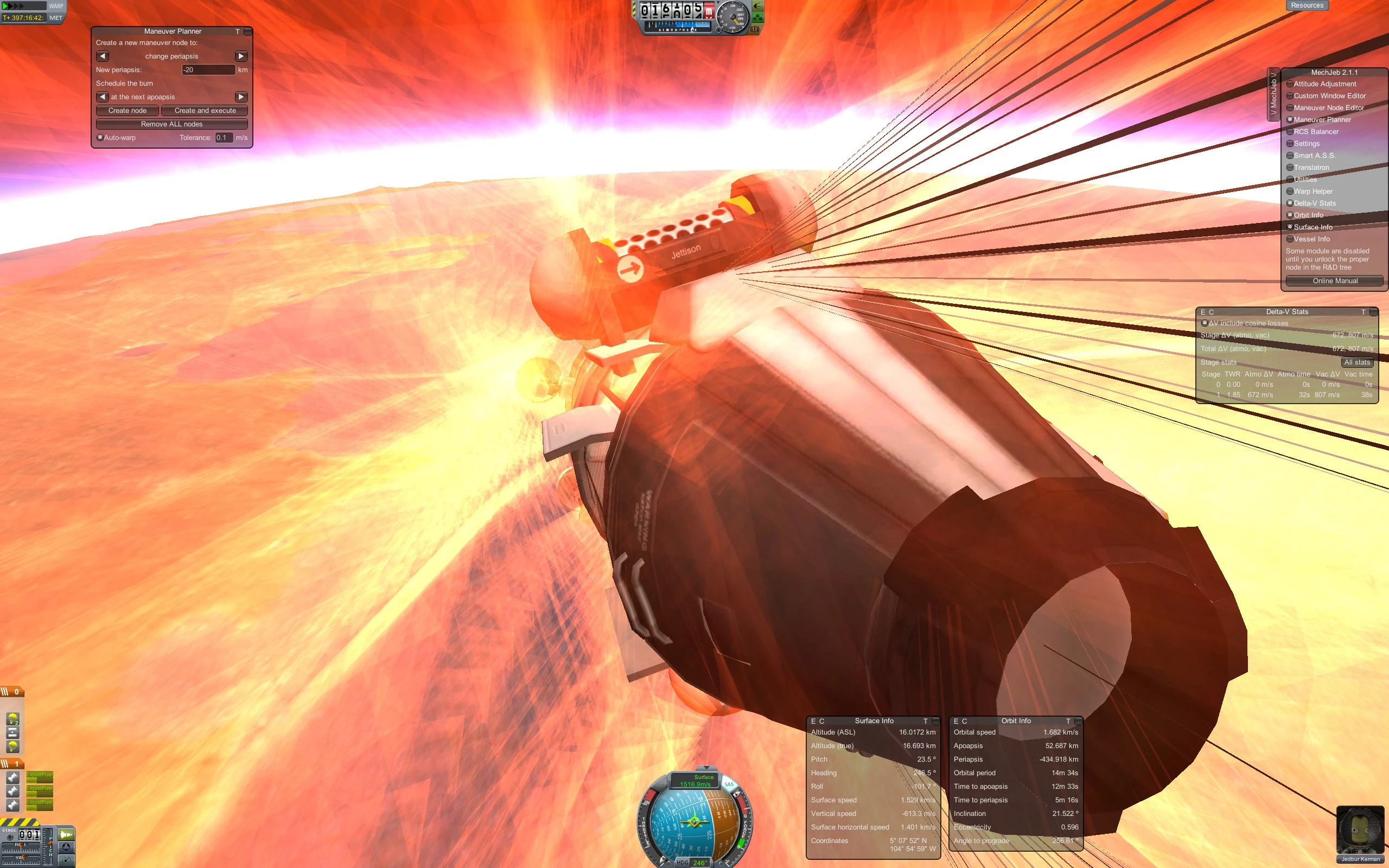
That is not to say that all missions went according to plan.
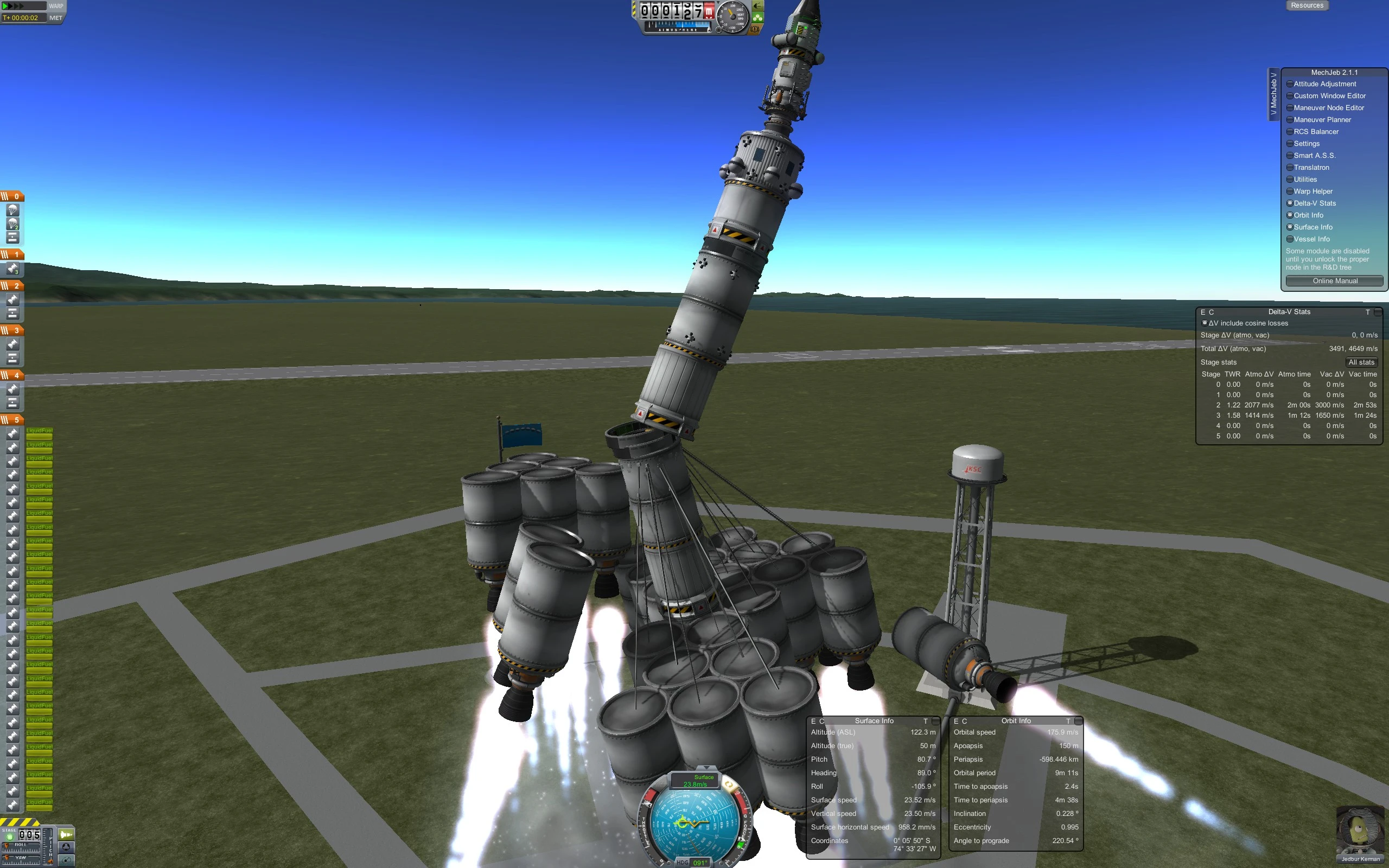
Tomorrow: we have to go bigger.
Nice saga! KSP rocks.